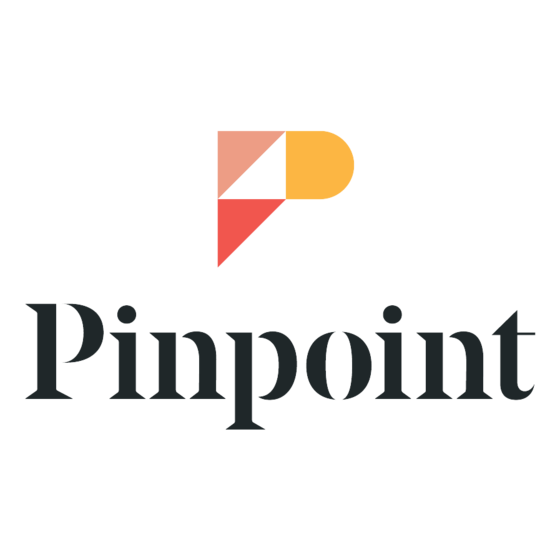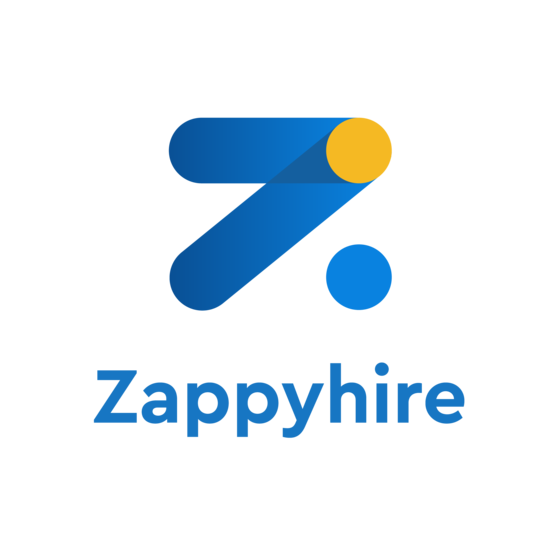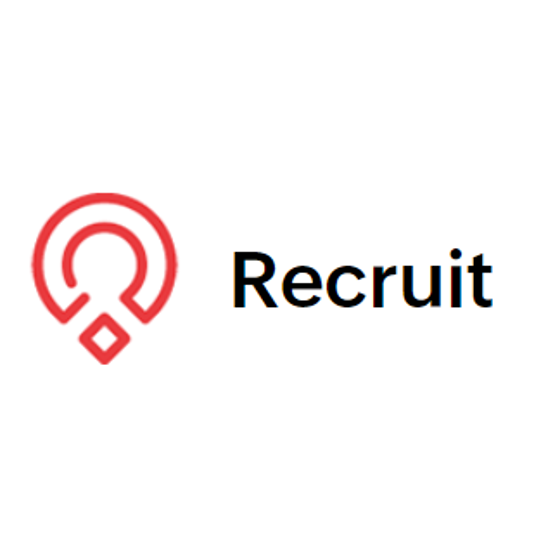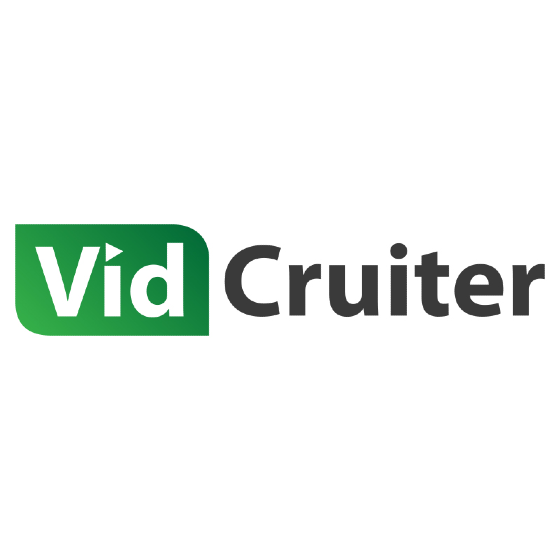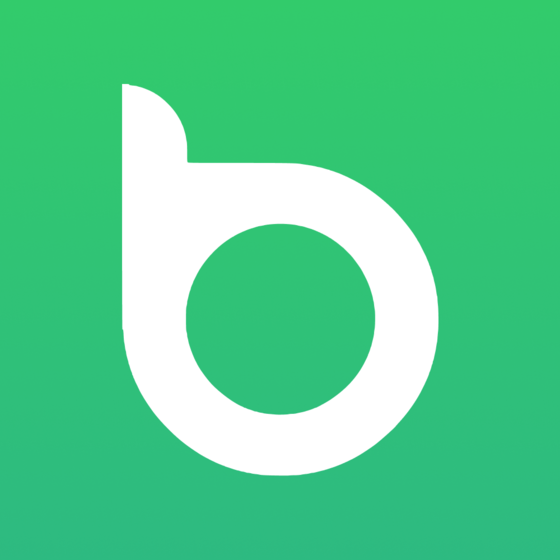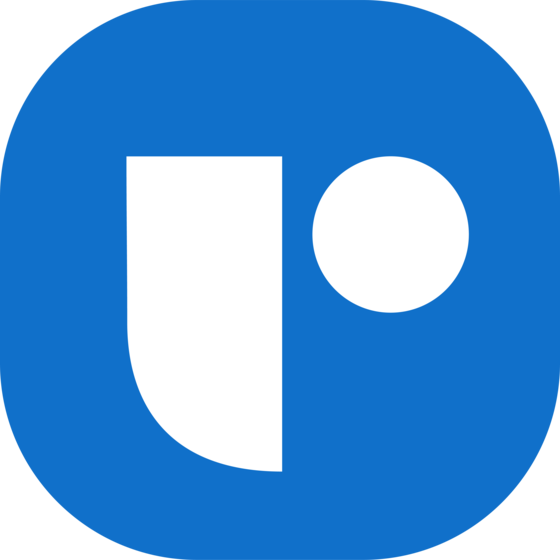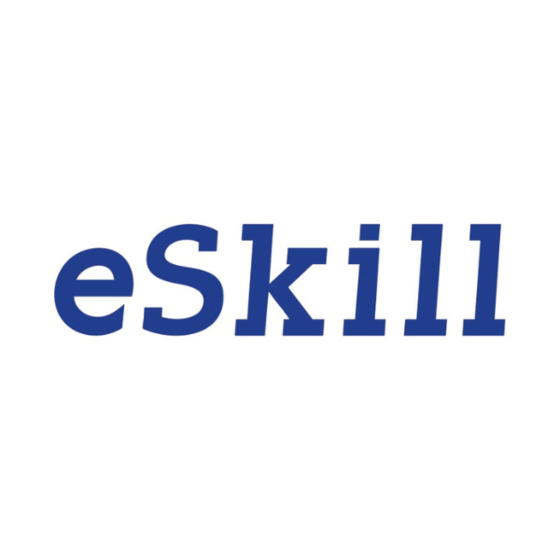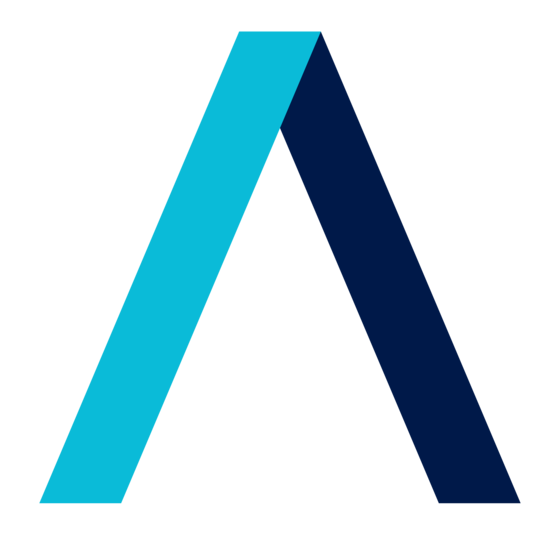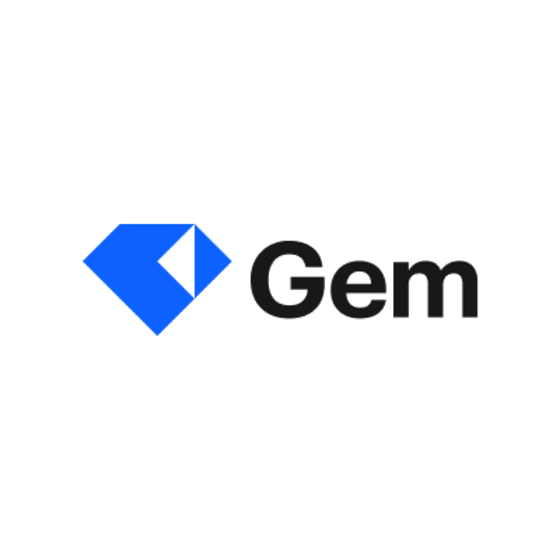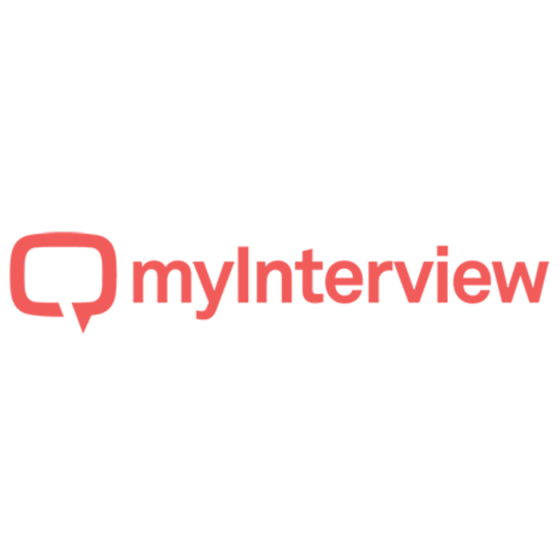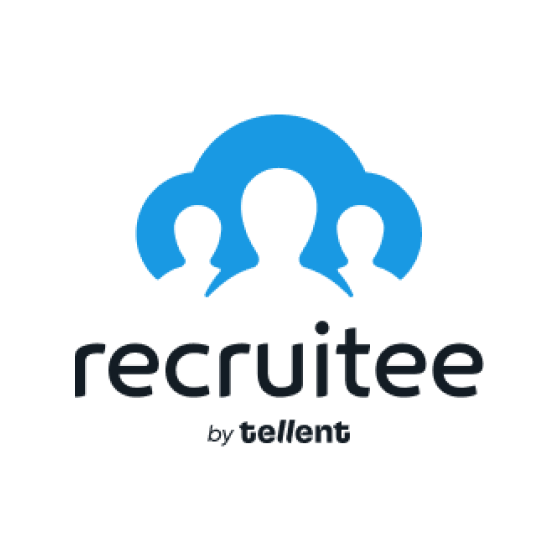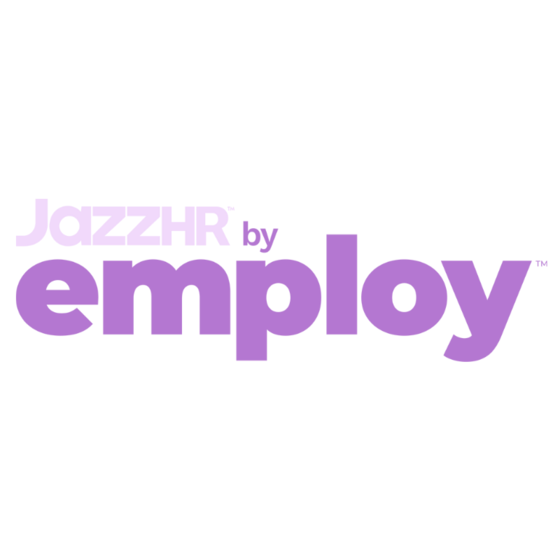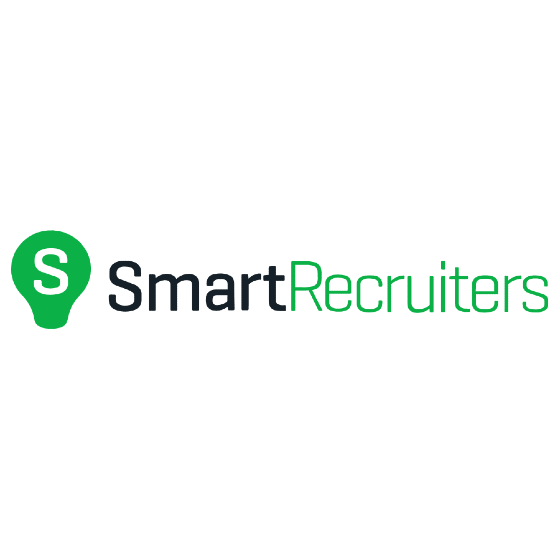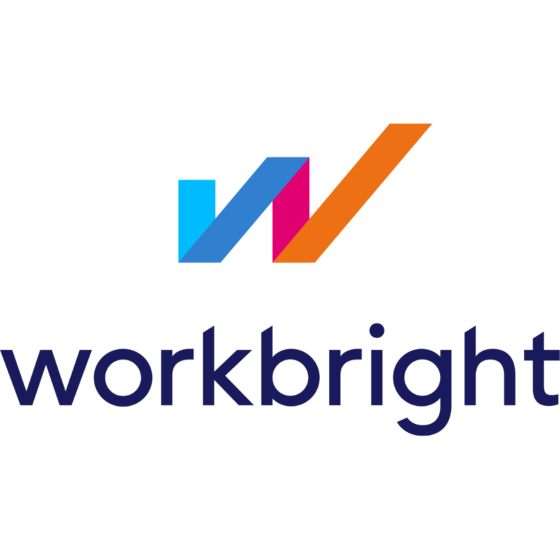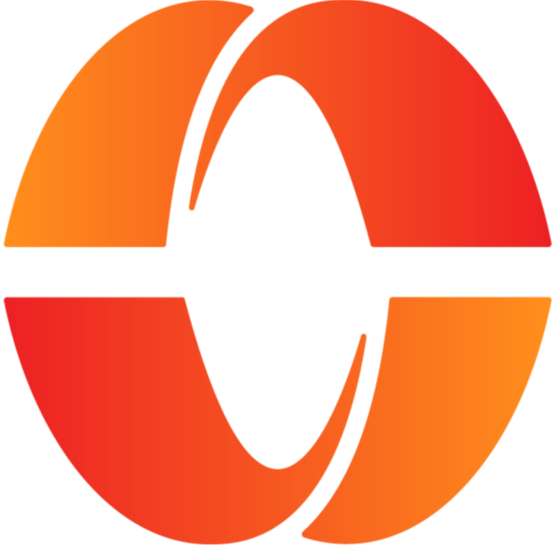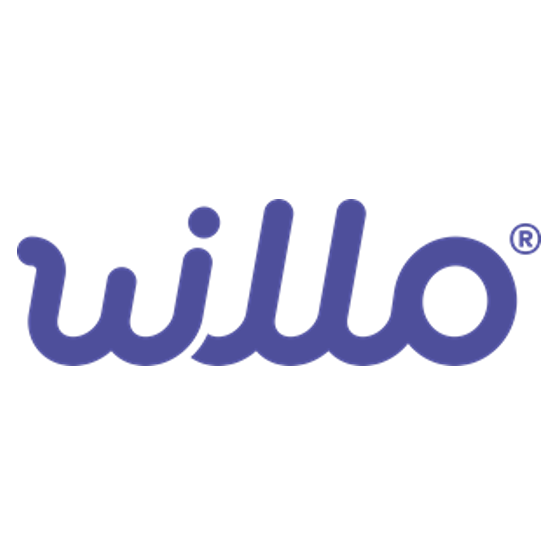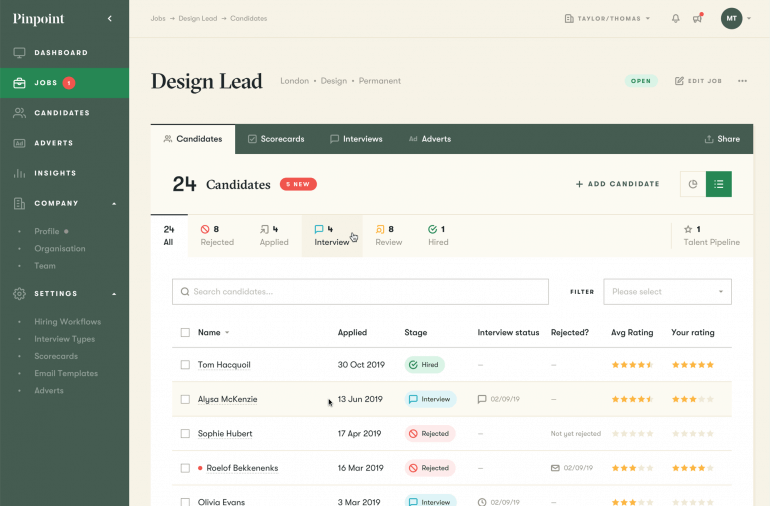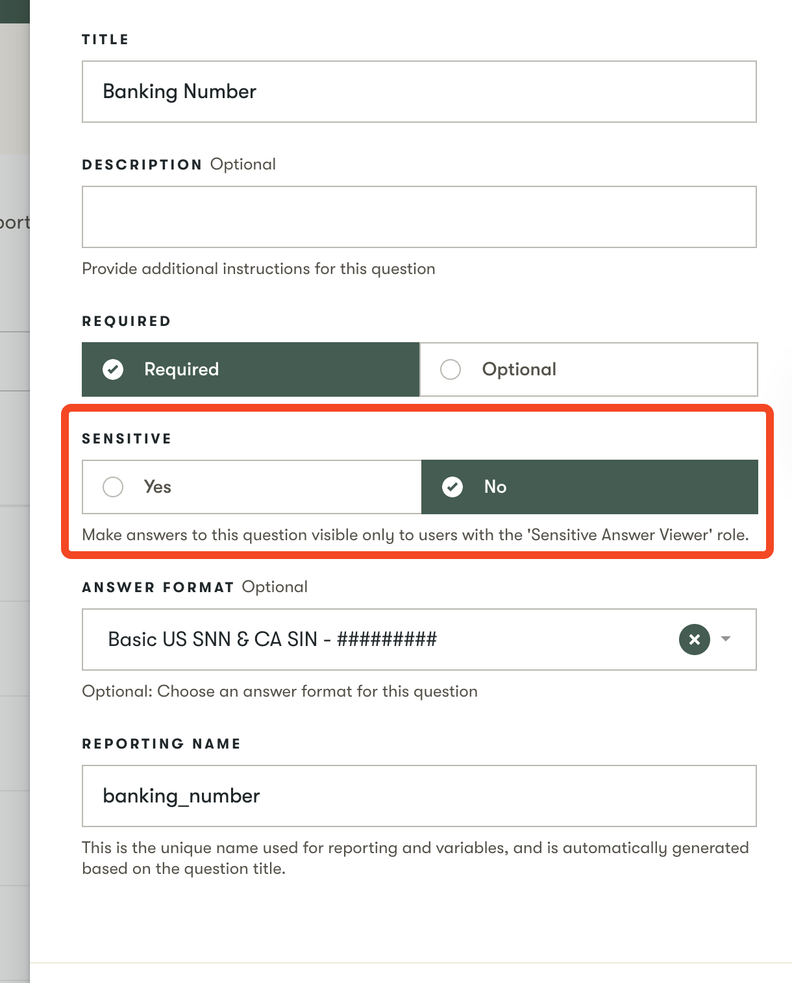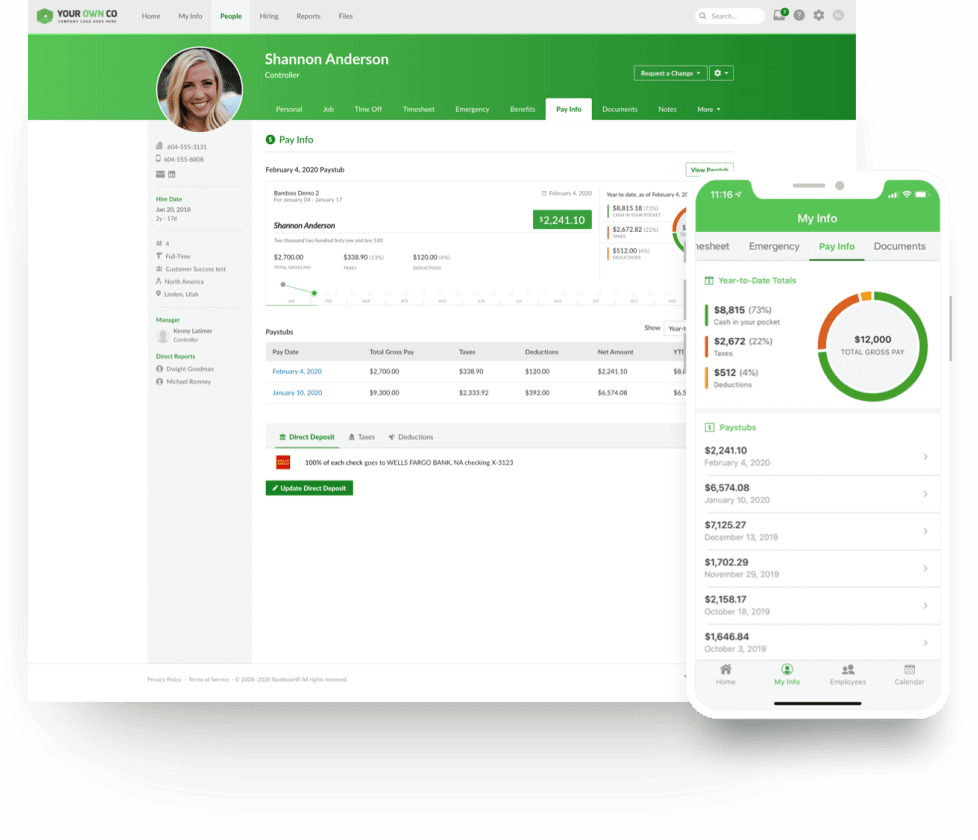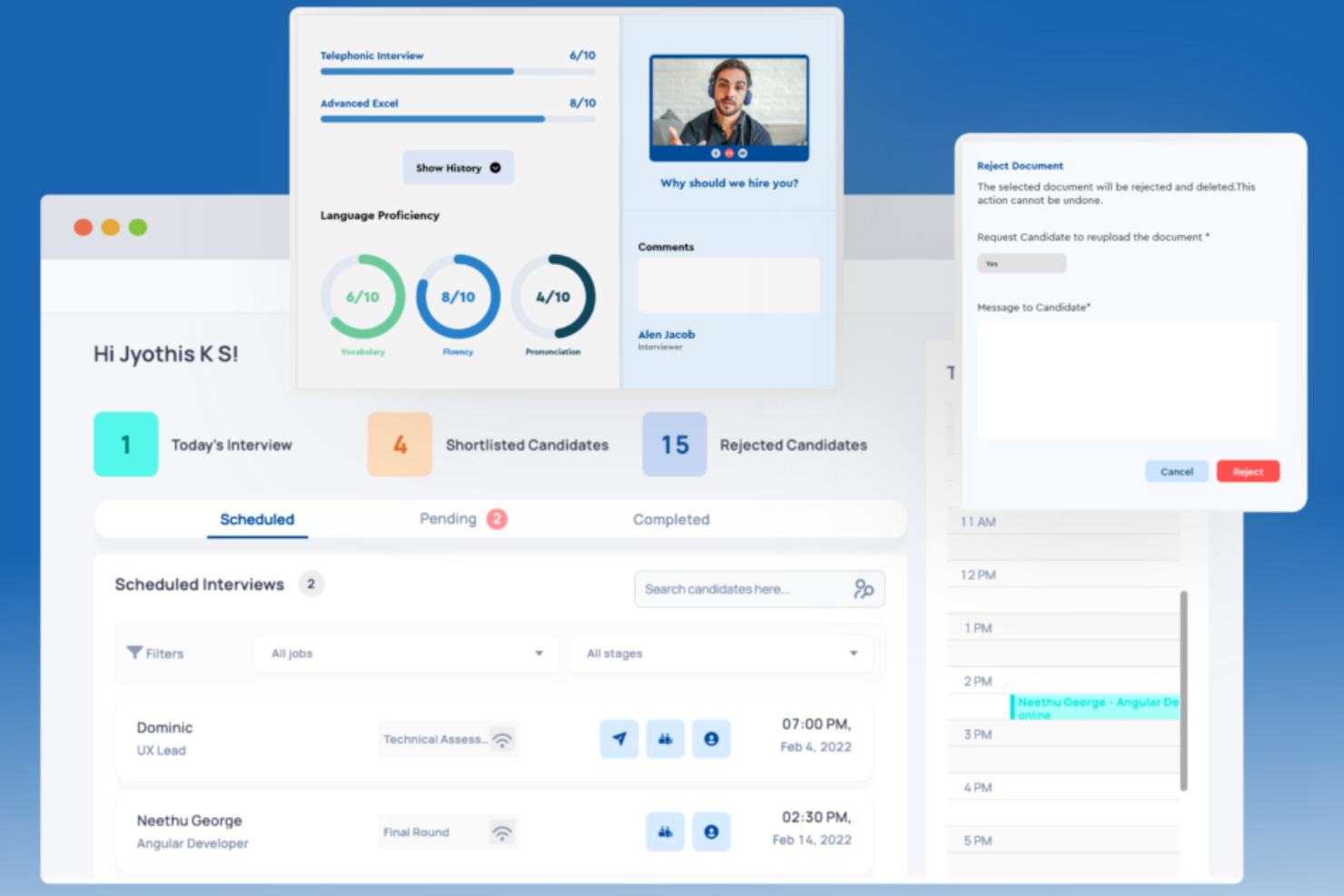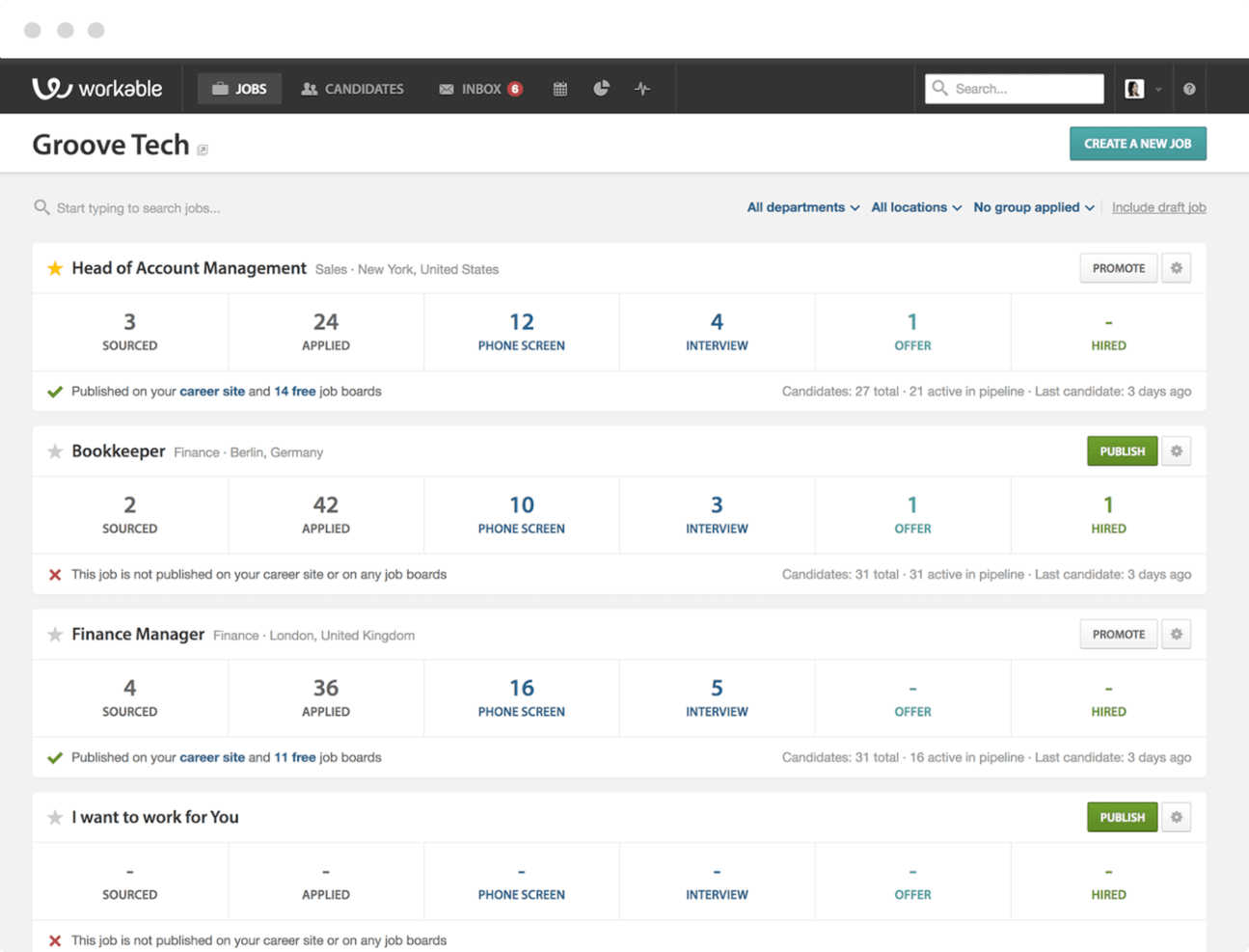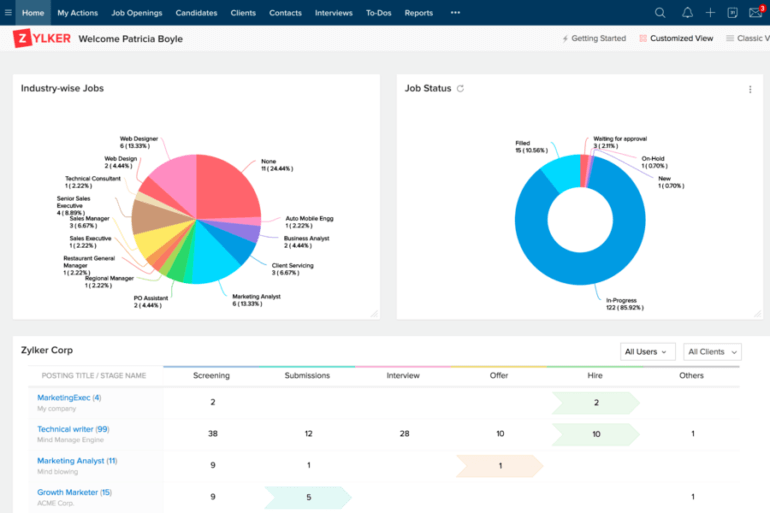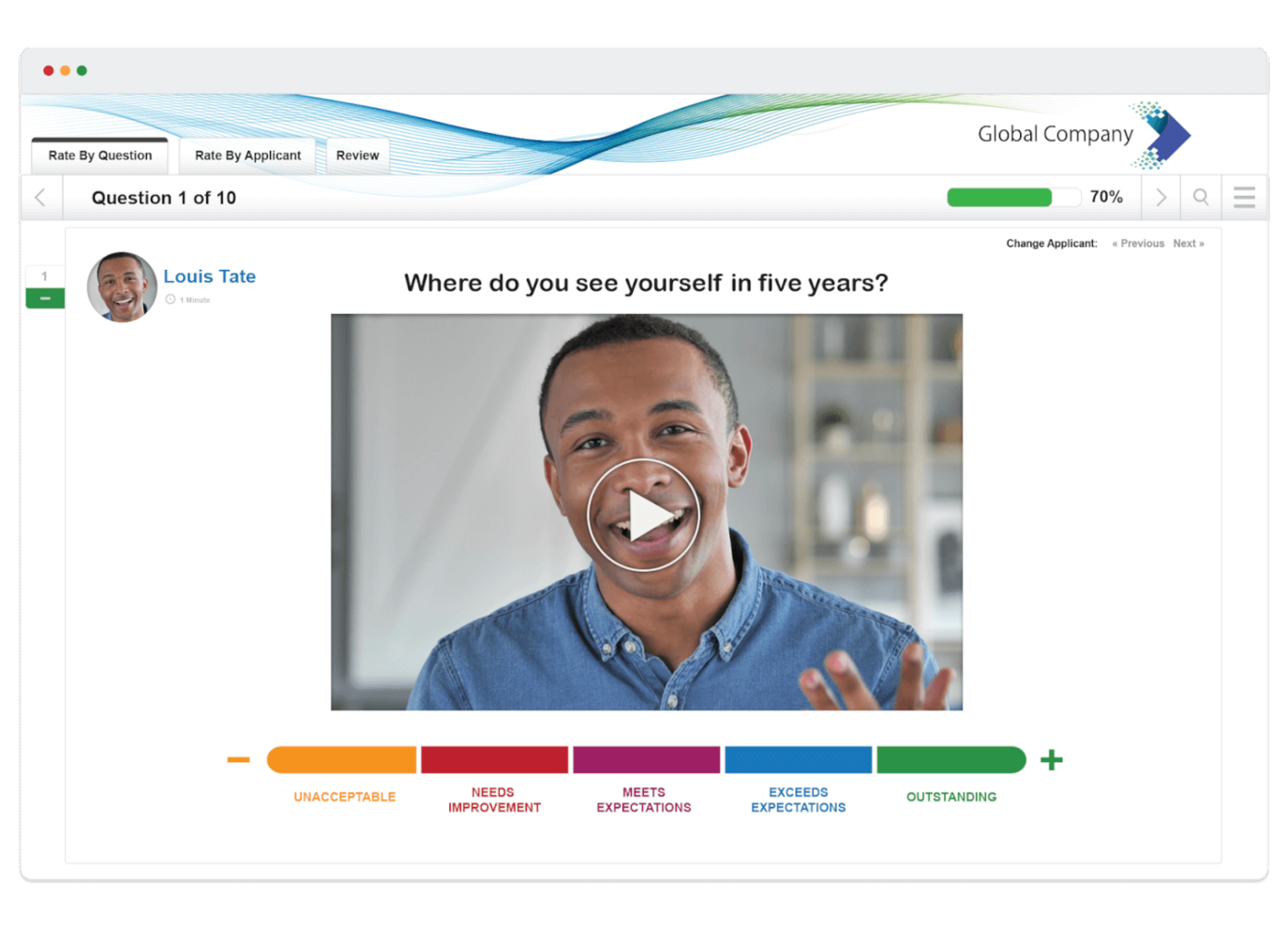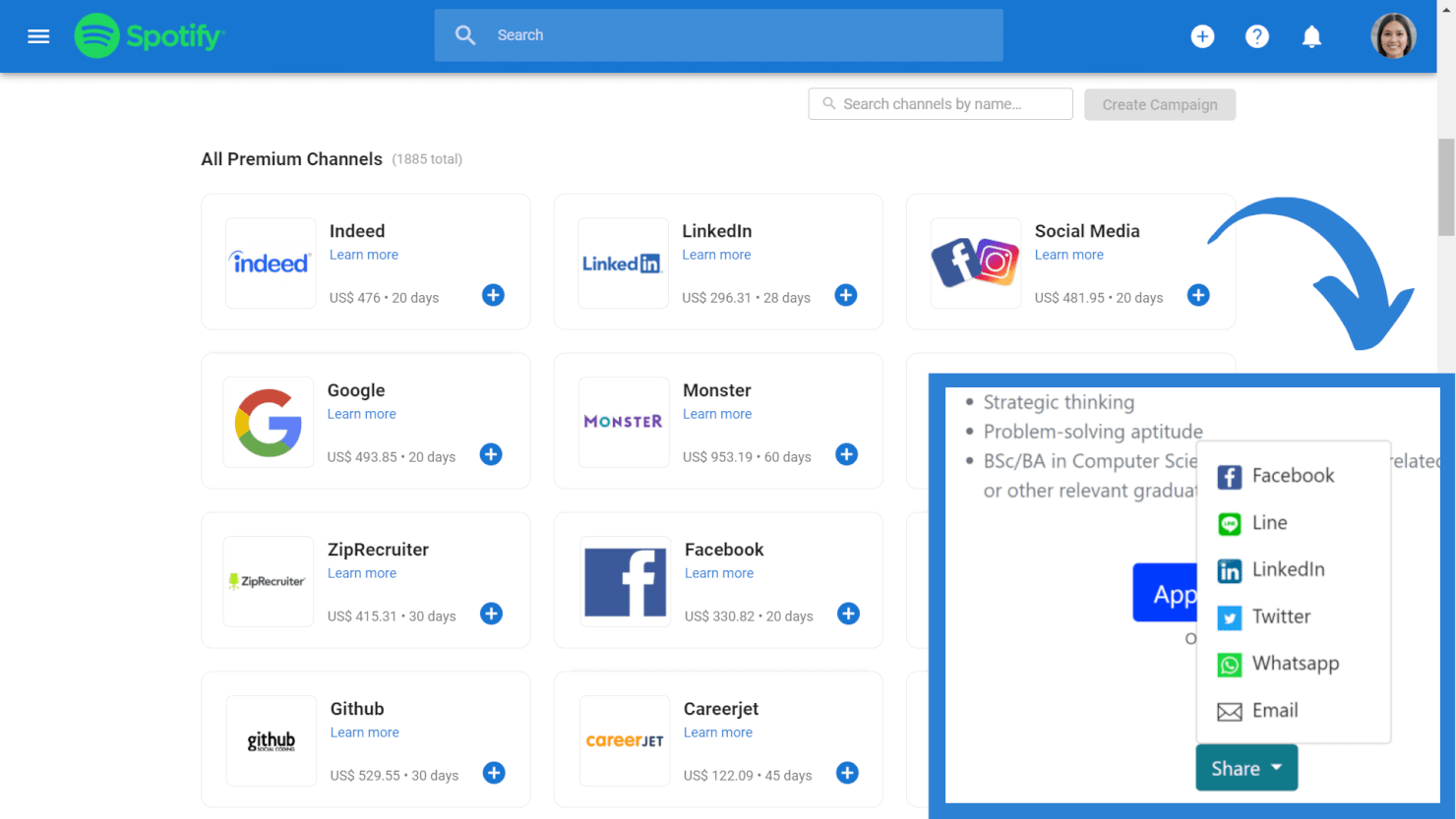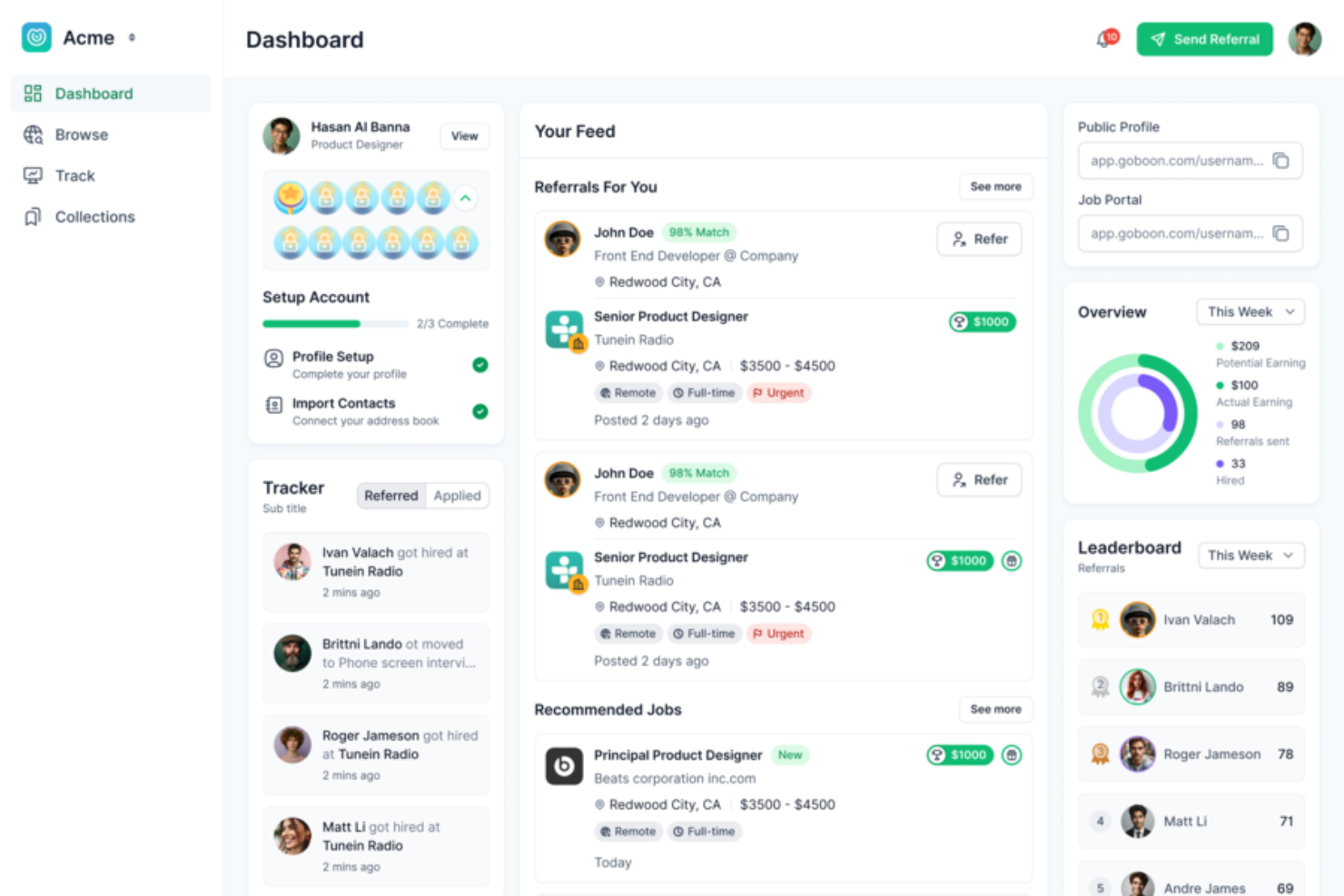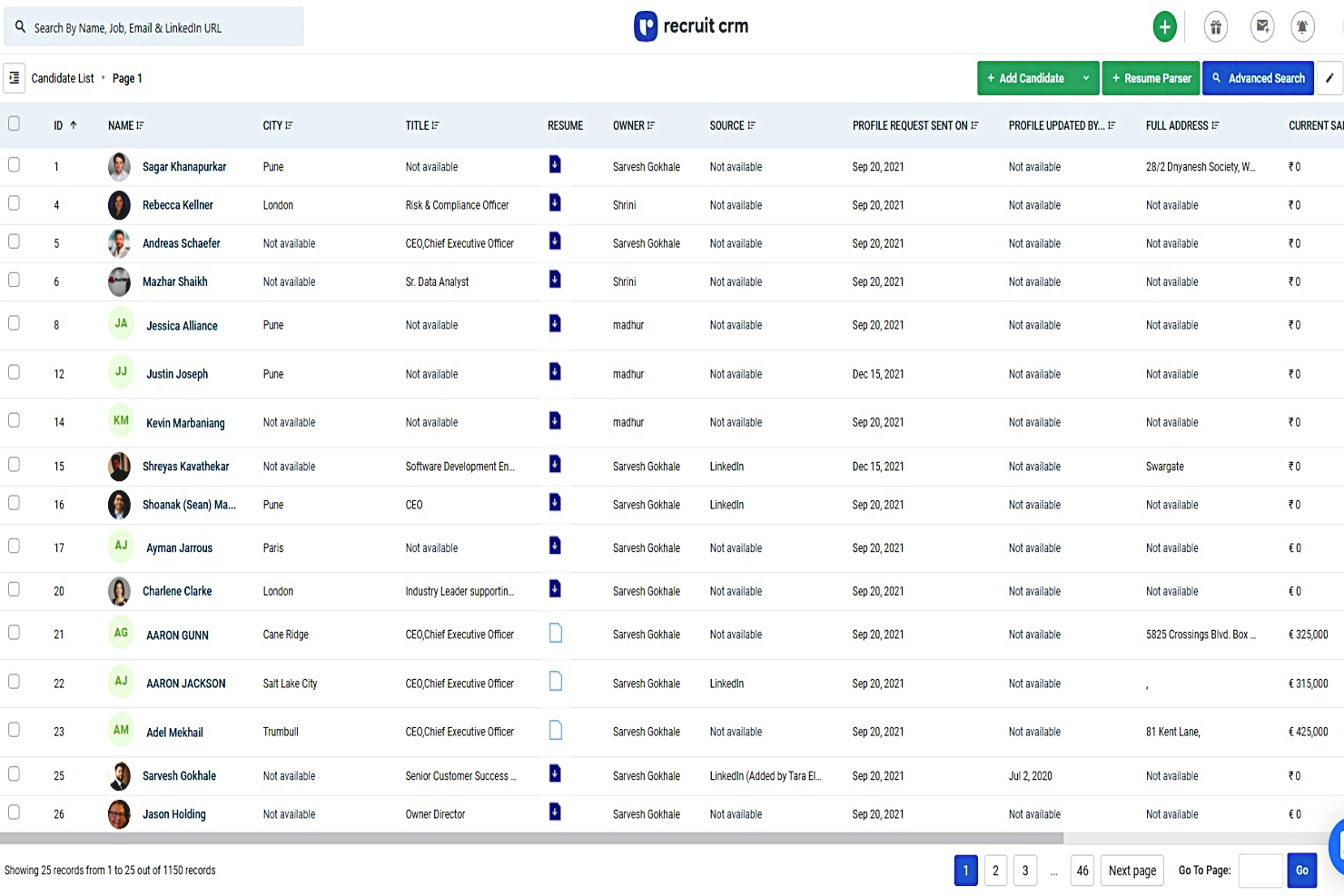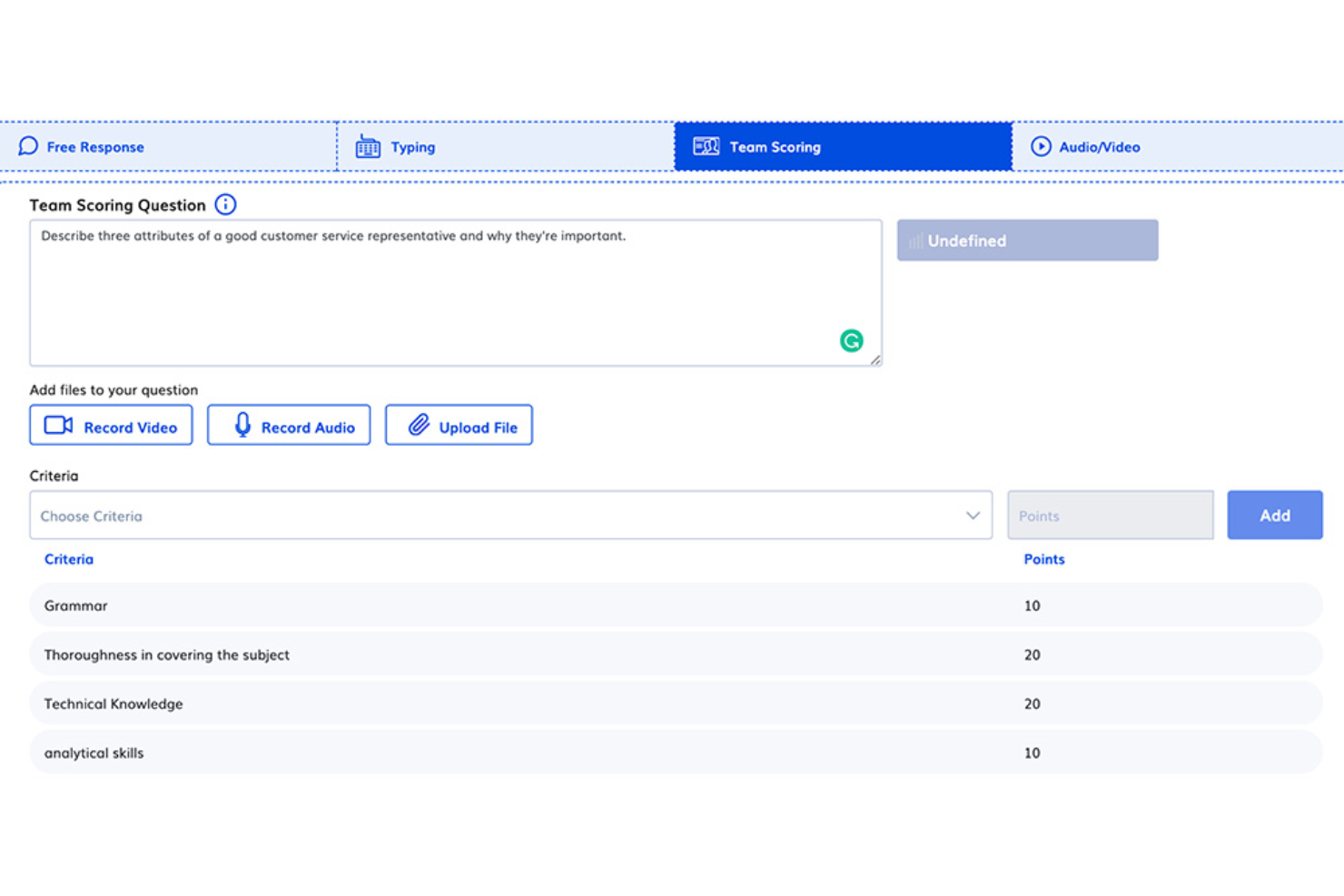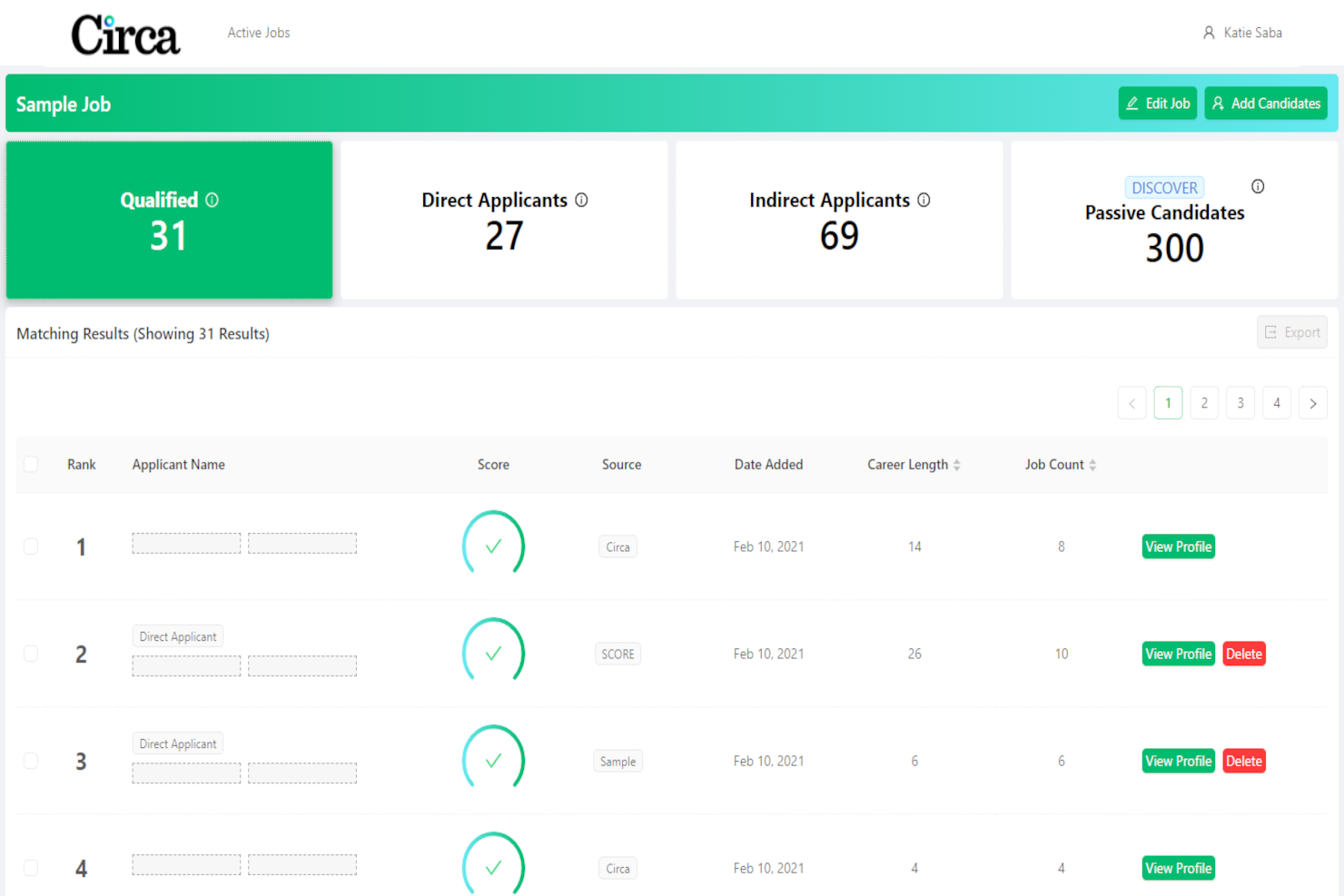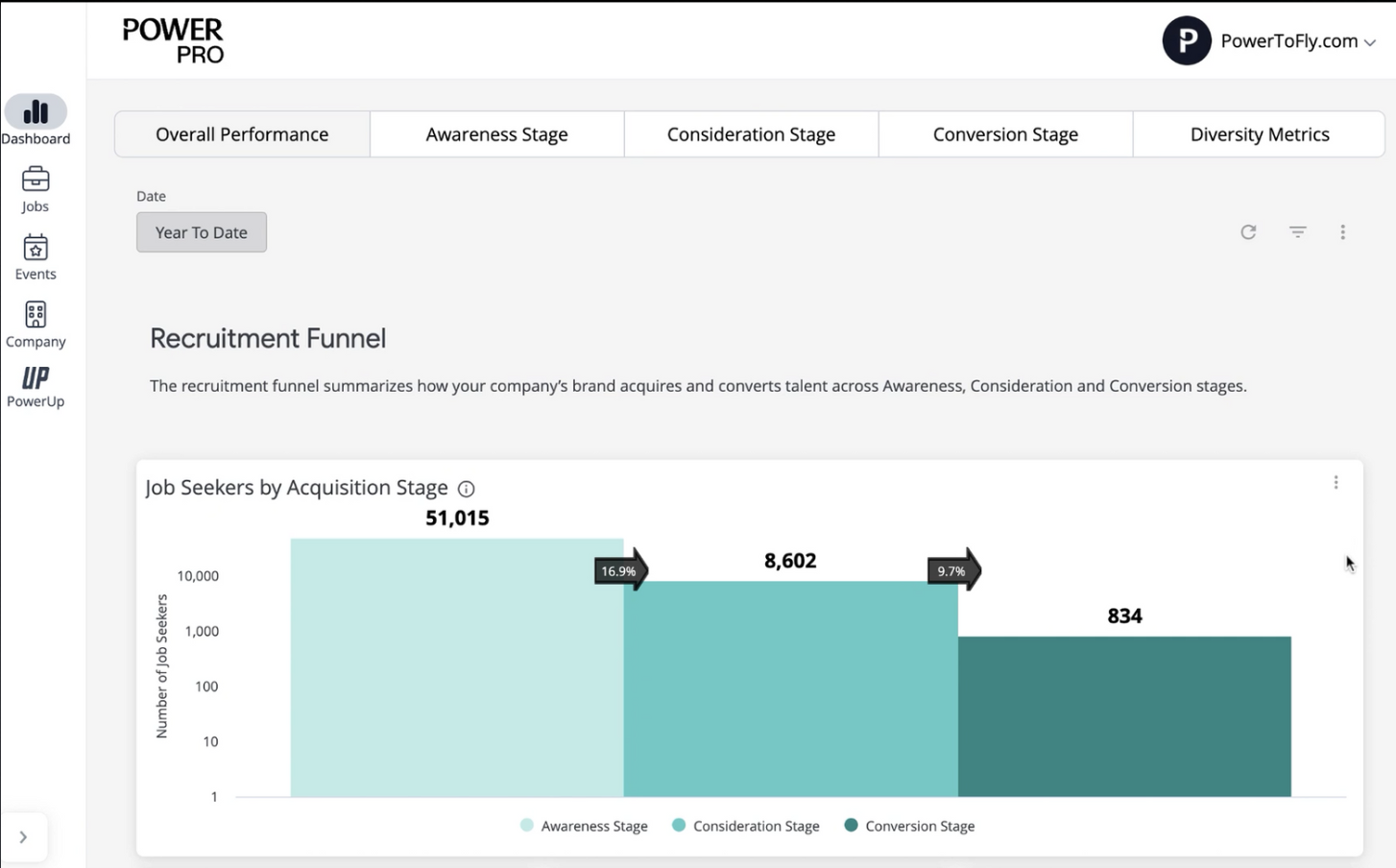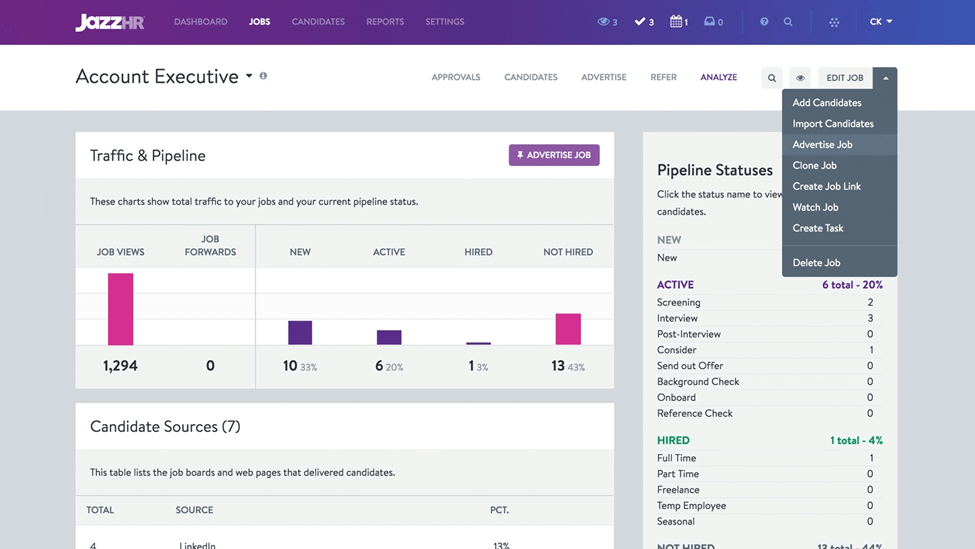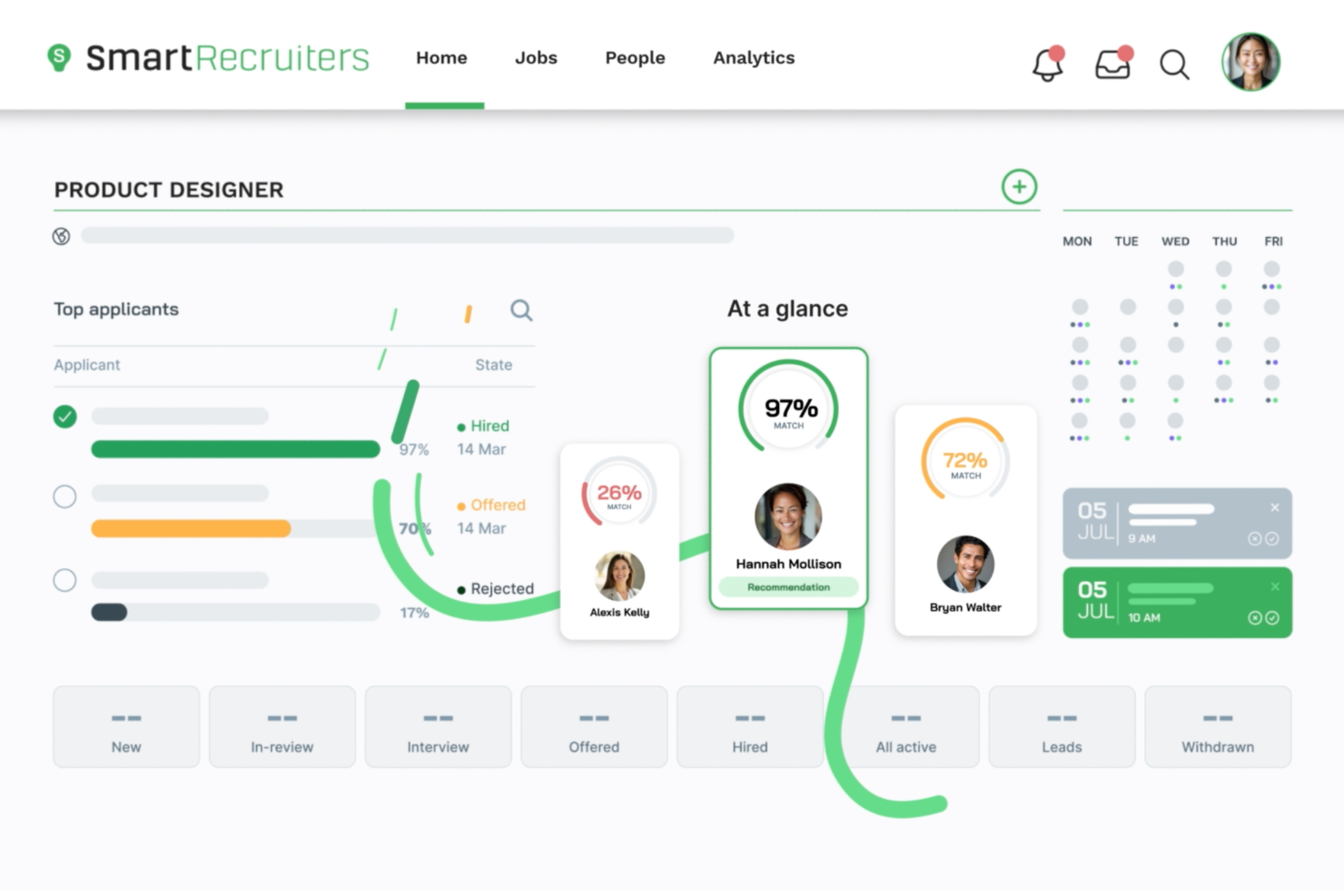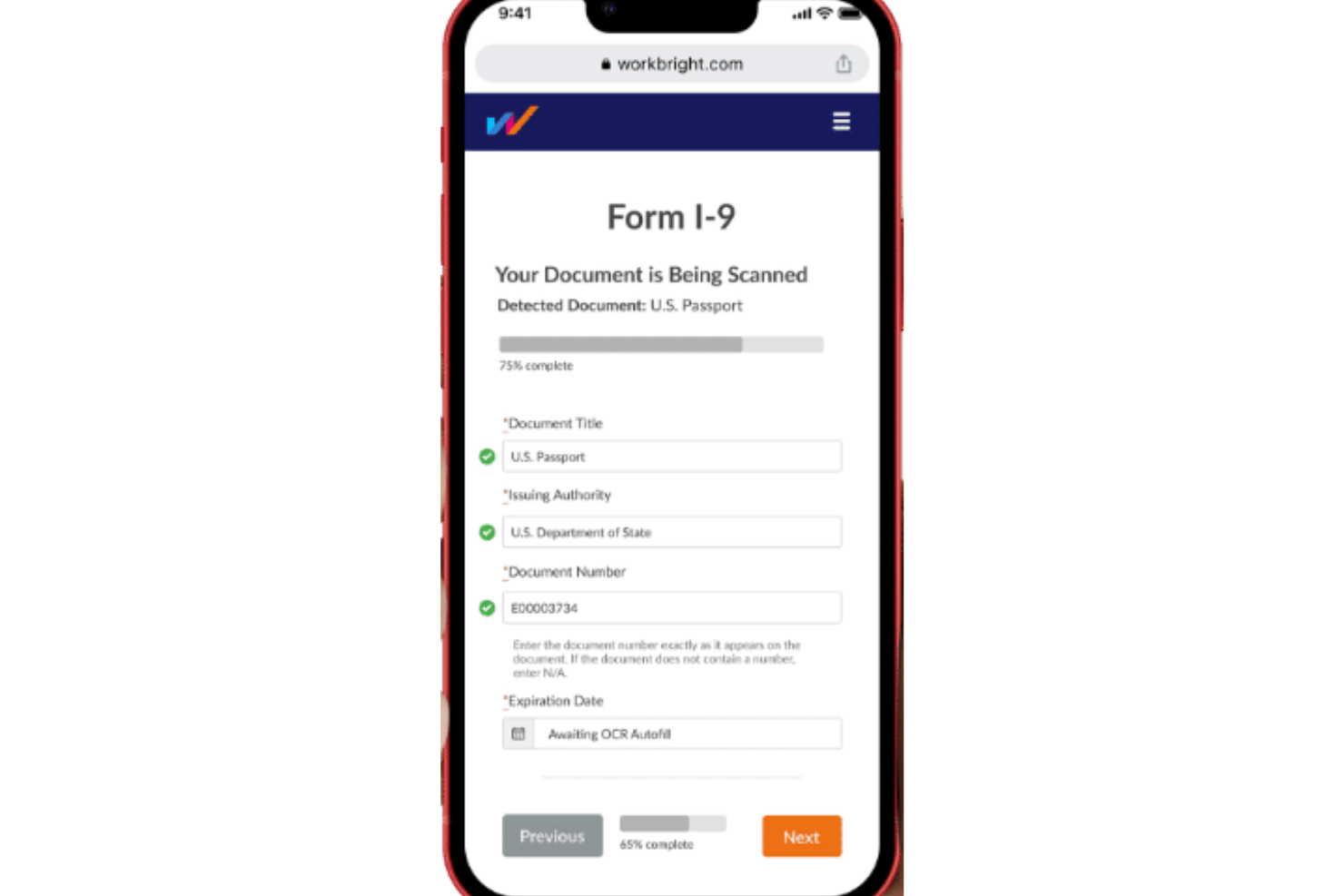20 Best Recruiting Software List
Here's my pick of the 20 best software from the 40 tools reviewed.
The best recruiting software helps you attract, engage, and hire top talent faster—while delivering a seamless experience for both candidates and hiring teams.
When roles sit open for too long or processes rely on manual tracking, you risk losing great candidates to faster-moving competitors. The right platform centralizes applications, streamlines communication, and automates repetitive tasks, giving you more time to focus on building strong relationships with candidates.
Based on my hands-on experience with various recruiting tools, I’ve curated a list of the top solutions that are intuitive, scalable, and designed to give organizations of all sizes a hiring advantage.
In this guide, you’ll find options to improve efficiency at every stage of the recruitment process—from sourcing to offer acceptance.
You Can Trust Our Software Reviews
We've been testing and reviewing recruiting software since 2019. During that time, we've tested more than 2,000 tools for different HR use causes and written over 1,000 comprehensive software reviews.
As HR professionals ourselves, we know how critical and difficult it is to make the right decision when selecting software, so we invest in deep research to help our audience make better software purchasing decisions.
Learn how we stay transparent, and take a look at our software review methodology.
Best Recruiting Software: Pricing Comparison Chart
This comparison chart summarizes pricing details for my top recruitment software selections to help you find the best software for your budget and business needs.
| Tool | Best For | Trial Info | Price | ||
|---|---|---|---|---|---|
| 1 | Best for in-house talent acquisition and HR teams | Free demo available | Pricing upon request | Website | |
| 2 | Best ATS & CRM for staffing and recruiting firms | Free demo available | Pricing upon request | Website | |
| 3 | Best for recruiting tools within a full HRIS suite | 7-day free trial | From $6.19/user/month (billed annually) | Website | |
| 4 | Best for predictive hiring insights | Free trial available | Pricing upon request | Website | |
| 5 | Best for sourcing qualified passive candidates using AI | 15-day free trial + free demo | Starting at $299/month | Website | |
| 6 | Best recruitment software for staffing agencies | 15-day free trial + free plan available | From $25/user/month (billed annually) | Website | |
| 7 | Best for large-volume candidate sourcing | Free demo available | Pricing upon request | Website | |
| 8 | Best for multi-tiered video interviewing | Free demo available | Price upon request | Website | |
| 9 | Best for social media recruitment | 14-day free trial | From $15/user/month | Website | |
| 10 | Best software for scaling referrals | Free demo available | Pricing upon request | Website | |
| 11 | Best all-in-one solution for recruitment agencies | Free trial available | From $84/user/month | Website | |
| 12 | Best for customizable pre-employment assessments | Free demo available | Pricing upon request | Website | |
| 13 | Best for inclusive hiring | Free demo available | From $295/month | Website | |
| 14 | Best for a focus on diversity and inclusion | Free demo available | Pricing upon request | Website | |
| 15 | Best for nurturing candidates through the recruitment process | Free plan available (under 15 employees) | Pricing upon request | Website | |
| 16 | Best for AI-powered candidate screening | Free demo available | Pricing upon request | Website | |
| 17 | Best for collaborative hiring | 18-day free trial | From $269/month | Website | |
| 18 | Best for small businesses and startups | 14-day free trial | From $75/month | Website | |
| 19 | Best for full recruiting workflows | Free demo available | Pricing upon request | Website | |
| 20 | Best for intelligent talent spotting | Free demo available | Pricing upon request | Website |
-

Rippling
Visit WebsiteThis is an aggregated rating for this tool including ratings from Crozdesk users and ratings from other sites.4.8 -

Paylocity
Visit WebsiteThis is an aggregated rating for this tool including ratings from Crozdesk users and ratings from other sites.4.5 -

Willo
Visit WebsiteThis is an aggregated rating for this tool including ratings from Crozdesk users and ratings from other sites.4.8
Best Recruiting Software Reviews
Here are my summaries of the best recruiting software that made it into my top 10 list, including notes on why I picked them. Each review offers a detailed look at the key features, pros & cons, software integrations, and ideal use cases of each system to help you simplify your selection process and find the best tool for you.
Pinpoint is an applicant tracking system designed for internal talent acquisition and people teams rather than recruitment agencies.
Why I picked Pinpoint: Pinpoint is extremely powerful yet easy-to-use with an intuitive design and user experience. Recruiters and hiring managers can get up and running with their software quickly, or request additional help from their customer support team as needed. Unlimited support by live chat, phone, or email is included in all their paid plans.
Pinpoint Standout Features & Integrations:
Standout features that make Pinpoint unique include blind screening to help reduce unconscious bias, candidate scorecards for gathering fast and objective hiring manager feedback, and a suite of reporting tools including a custom report builder. They also offer access for an unlimited number of users, since their software isn't priced per user.
Pinpoint's recruiting software also includes core ATS and recruitment CRM features like job board multi-posting and social media advertising, a custom careers website, unlimited customizable workflows, automation, interview scheduling, and employee onboarding. Data protection and security features include single sign-on, two-factor authentication, and tools to help manage compliance with local regulations like the GDPR / CCPA.
Integrations are available natively with hundreds of other platforms. Plus Pinpoint has a Zapier integration that enables integration with over 3,000 other tools.
Pros and cons
Pros:
- Hired candidates can sign their offer letters with digital e-signatures
- Multilingual capabilities are available in their top-tier plan
- Blind recruitment tools available in every plan
Cons:
- Onboarding tools are an optional add-on
- May be too expensive for small recruiting teams
New Product Updates from Pinpoint
Pinpoint's Enhancements to Onboarding, Approvals, and Templates
Pinpoint's latest update enhances onboarding with new dashboard views and improved reporting. It also introduces SMS templates, document previews, and more. For more information, visit Pinpoint's official site.
Tracker is a recruitment and staffing software that acts as a combined ATS and CRM. The tool is designed to help staffing and recruiting firms manage and optimize their candidate, client, marketing, and operational processes.
Why I picked Tracker: I included Tracker in this list because of its dual purpose as an ATS and CRM system, which makes it a great choice for recruiting firms and staffing agencies that have a heavy customer relations focus. Tracker's back office functions cover client onboarding, assignment management, sales & marketing, and accounting. Plus, they have an integrated vendor management system (VMS) that helps teams proactively source talent 24/7 thanks to their rules-based parsing engine and auto-match technology.
Tracker Standout Features & Integrations:
Features include their AI-powered candidate assessment and sourcing tool that uses data such as a candidate’s past success in similar roles, their fit with a specific role, and even feedback from people who’ve worked with them before. This, combined with automated lead nurturing, will help ensure you have a healthy recruitment and sales pipeline.
Other features include the ability to set up custom candidate portals, dashboards, workflows, and reports easily thanks to their user-friendly interface. Plus, Tracker also offers tools like resume parsing to remove resume formatting and help eliminate manual data entry.
Integrations include a wide variety of job boards, as well as third-party tools like Outlook, Gmail, Google Chrome, LinkedIn, Office 365, and QuickBooks through their RESTFul API. You can also connect Tracker to 30+ other software solutions using their Zapier API integration.
Pros and cons
Pros:
- Highly regarded customer support and success team
- Ability to customize views, fields, workflows, and more
- Intuitive, easy-to-use interface
Cons:
- No built-in payroll, but integration with Quickbooks and others is offered
- No background check integration
New Product Updates from Tracker
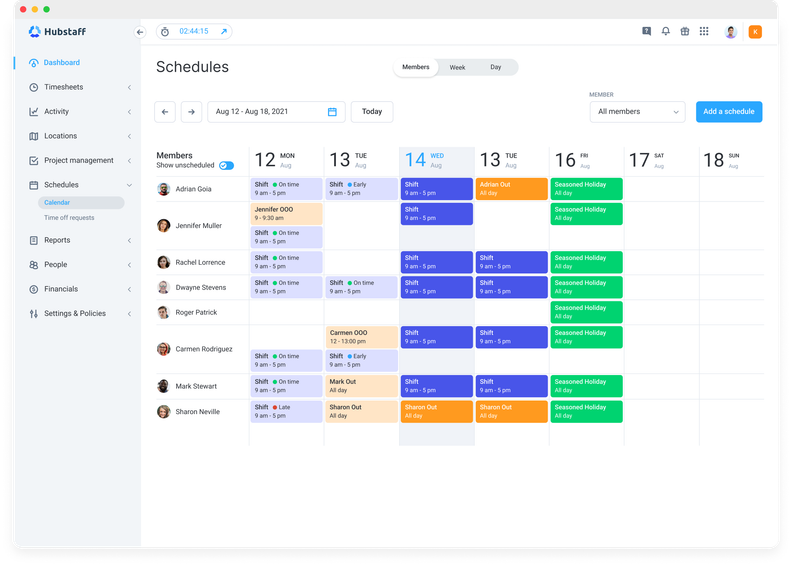
Tracker's Shift Planner: New Action Menu, Enhanced Job Creation, and Improved Availability
Tracker's Shift Planner now features a new action menu for bulk shift actions, job creation by company name entry, improved week-view availability with color coding, and direct navigation from the Shift Dashboard. For more details, visit Tracker's website.
BambooHR is an all-in-one HR platform that can handle everything from recruiting candidates to employee onboarding to compensation tracking to staff satisfaction surveys.
Why I picked BambooHR: Their system can scale from a basic recruiting solution to a full HRIS suite (at an additional cost) with full-picture support for the entire employee lifecycle. Their recruiting solution unlocks its best features (onboarding, training tracking, ATS) with their advantage subscription tier, which tends to land in the $8-9/user/month range.
You can pay to unlock everything from time tracking and payroll tools to employee engagement and performance reviews. Even if you don’t think you’ll need those things now, BambooHR can put you in a position where feature scalability is incredibly easy in the future.
BambooHR Standout Features & Integrations:
One of Bamboo HR's standout features includes its reporting feature that comes with 49 built-in reports and customizable dashboards you can use to make data-driven decisions and help make HR a more strategic partner of the business.
BambooHR doesn’t partner with as many job boards as some of the others on this list. If you are going for quality over quantity, they tend to do a good job. However, if you want a broader or more creative/niche reach, then you might find BambooHR lacking somewhat. This can easily be overcome through additional copy-and-pasting on your part, it’ll just take a bit more time.
Integrations include Northpass, Lucidchart, GoodHire, Okta, Lattice, Greenhouse Software, 15Five, JazzHR, Netsuite, Slack, Swipeclock, BreezyHR, and a growing list of other options through their apps marketplace, which unlocks with their mid-level subscription tier. You can also connect to hundreds more using a paid account through Zapier.
Pros and cons
Pros:
- Offer letters with e-signature signing capabilities
- Affordable for small businesses
- Smooth workflow between hiring and onboarding
Cons:
- Not a recruiting-first system
- Only for North American businesses
New Product Updates from BambooHR®
BambooHR Carrier Status Bar and Salary Proration Enhancements
BambooHR rolled out two updates to boost efficiency and accuracy. You can now track your carrier connection at a glance and let BambooHR handle salary proration for unpaid time off. Visit BambooHR®'s website for more.
Zappyhire is an AI-powered recruiting software designed to help teams manage the entire hiring journey from start to finish. It brings automation into core recruitment tasks, from screening candidates to onboarding new hires.
Why I picked Zappyhire: I picked Zappyhire because of two signature capabilities that stand out in recruiting software: agentic predictive hiring and its automated video interviewing engine, ZappyVue. Its predictive hiring models use your historical hiring data to give smart recommendations and anticipate hiring needs at every stage. Meanwhile, ZappyVue lets candidates record video responses to pre-set questions, automatically scoring them on knowledge and language analysis, so you can screen at scale without bias or scheduling overhead.
Zappyhire Standout Features & Integrations:
Standout features include contextual resume parsing that looks beyond keywords to understand meaning and rank candidates in a way that feels closer to how a recruiter would think. Additionally, the recruiting chatbot supports candidates throughout the process by answering questions, guiding them through applications, and even scheduling interviews automatically.
Integrations include Google SSO, Azure SSO, LinkedIn, Facebook, Naukri, Zoom, Slack, WhatsApp, AuthBridge, SpringVerify, Google Calendar, and Dropbox.
Pros and cons
Pros:
- Chatbot handles candidate engagement & scheduling
- Contextual resume parsing (not just keywords)
- Provides predictive hiring recommendations
Cons:
- Complex configuration for custom workflows
- AI scoring may misjudge nuanced answers
Best for sourcing qualified passive candidates using AI
Launched in 2012, Workable has amassed over 27,000 customers who leverage the recruiting software for candidate sourcing, applicant evaluation, and automated HR workflows. Current users include Forbes, Soho House, Sephora, and Joey Restaurants.
Why I picked Workable: I included Workable in this list because they maintain a database of over 160 million job seekers. Each time you post a new position, their software uses its AI-based sourcing engine to automatically provide you with a list of 50 qualified candidates, helping you speed up your hiring process significantly. The platform also enables you to share your job on 200+ job sites, so you can increase your reach.
Workable Standout Features & Integrations:
One of Workable's standout features is its passive candidate search functionality. It crawls social media platforms and creates detailed candidate profiles that include email addresses and social links, so you can contact highly skilled individuals directly. In addition, their automation features make it ideal for businesses trying to source the best candidates with specific skill sets, such as those operating in tech or SaaS.
Integrations are available natively with numerous other software systems, including ADP Marketplace, BambooHR, Checkr, Facebook, G Suite, Glassdoor, HRCloud, Indeed, LinkedIn, Microsoft platforms, Monster, Namely, Oracle HCM, RightHire, Sapling, Stack Overflow Talent, Workday, and many other options. They also have an open API to support any additional custom integrations you may need.
Pros and cons
Pros:
- Includes robust onboarding features including workflows, an org chart, and an employee directory
- Custom workflows are easy to set up
- Includes thousands of hiring templates to save you time
Cons:
- Requisition forms could be more customizable for different types of hiring needs
- Job requisition forms require location field data - a potential issue for wholly remote organizations
New Product Updates from Workable Recruiting
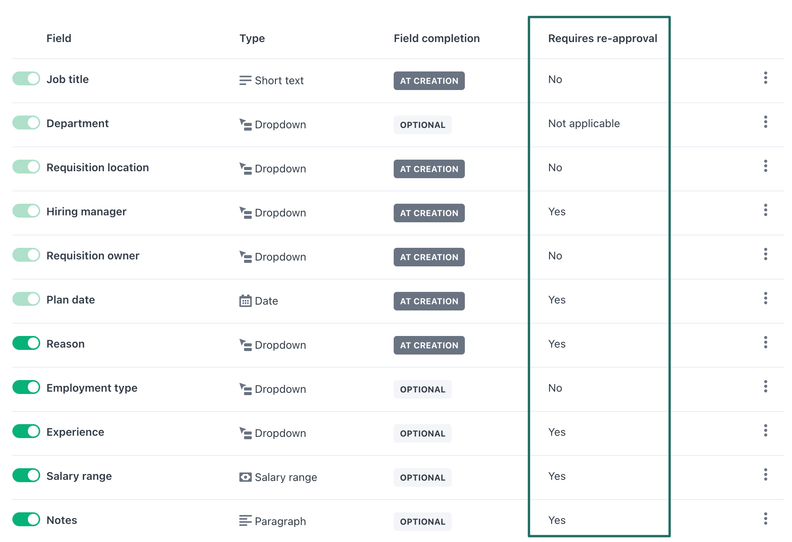
Direct Editing Access in Workable’s Hiring Plan
HR admins can now update filled requisitions directly in Workable’s Hiring Plan, editing fields like fill date and salary to ensure compliance and accurate reporting. For more details, visit Workable's updates.
Tools from the Zoho suite are used by over 60 million users around the globe, including teams from Amazon, Netflix, Facebook, KPMG, and HP. Zoho Recruit is their answer to recruitment management software for corporations, staffing agencies, and temp workforces, but it also works for in-house talent acquisition teams too.
Why I picked Zoho Recruit: I included this Zoho Recruit because they offer a sliding scale of customizations and integrations that can really expand what you're able to offer your clients. Additionally, they have staffing tools for temp workers specifically, like a jobs-vs-temps report, flexible timesheet approvals, and detailed scheduling calendars.
Another reason I chose them is that even their basic free forever plan includes candidate management, email templates, job board connections, and interview scheduling.
Zoho Recruit Standout Features & Integrations:
Other features that stand out in include their instant AI-based candidate matching tools and several collaboration features that help professional recruiters engage more effectively with their clients. For example, you can share your candidate shortlist with your clients through the applicant tracking portal, then empower them to leave comments and highlight their favourite candidates who they'd like to proceed with for the next stage. The product also includes a full-featured mobile app for Android and iOS devices that makes SMS communication with candidates easier.
Integrations are available with 45+ other Zoho tools for CRM, finance, marketing, IT, and other departments. Zoho also integrates with third-party apps like Slack, G-Suite, Outlook, Checkr, Mailchimp, ResumeLibrary.com, LinkedIn, Facebook, Twitter, Twilio, Indeed, Monster, CareerBuilder, DropBox, and a whole host of others. You can also access hundreds more through a paid plan with Zapier.
Pros and cons
Pros:
- An add-on is available for live and one-way video interviewing capabilities
- Includes comprehensive sourcing reports so you can evaluate your recruitment KPIs
- You can post new positions on 75+ job boards with one click
Cons:
- Customer support is only available during standard business hours (8 am to 5 pm, Monday to Friday)
- Duplicating candidate assessments requires a lot of copying and pasting
Greenhouse's modern recruiting software was designed to help organizations and staffing agencies eliminate chaotic and biased hiring practices and build inclusive, higher-performing teams. Their software development team is well-versed in recruiting best practices, so much that they even published a book on the subject. Their software is also used by over 4,000 companies and counting, including big names like Hubspot, Squarespace, and Wayfair.
Why I picked Greenhouse: Greenhouse lets you create a customized interview scorecard, ensuring that all recruiters score and source large columes of qualified applicants. You can track, measure, and report on your company's recruitment process to generate OKRs and KPIs that you can use for future tweaks or large-scale initiatives. You can also use Greenhouse to create custom candidate surveys and receive valuable feedback to improve your hiring process.
Greenhouse Standout Features & Integrations:
One of Greenhouse's standout features is their mobile app for iOS and Android devices which covers a wide assortment of functionalities. Key features include summaries of open jobs, stages & candidates; application review and in-app approval processes; mobile interview prep kits, which include job details, interview questions & candidate scorecards; candidate profiles with activity feed, resume, attachments & submitted scorecards; and an interview dashboard that summarizes upcoming interviews and outstanding scorecards.
Integrations are available natively with 400+ software systems, including BambooHR, Bob, Calendly, Checkr, Deel, Gem, Google Meet, LinkedIn, Microsoft Teams, Real Links, and many others. They also have an open API to support any other custom integrations you may need.
Pros and cons
Pros:
- All packages include a robust customer onboarding implementation plan
- Includes tools to track diversity, equity, and inclusion (DEI) metrics and mitigate unconscious bias
- Their Essential (basic level) package offers good value for small businesses
Cons:
- Business intelligence tools are only available in their top-tier paid plan
- Pricing details are not transparent
VidCruiter’s applicant tracking system is set up for high-volume recruiting, making it a great choice for enterprise organizations or small teams with big hiring goals.
Why I picked VidCruiter: The platform is user friendly and easy to navigate. You can customize it to fit your specific hiring process, whether you're a small business or a large corporation.
But what really makes VidCruiter stand out are its features. The video interviewing tool, for example, is a game-changer. It allows you to conduct live or pre-recorded interviews, which is a time saver. Plus, it's got a great feature that enables you to rate and comment on candidates' responses, making it easier to compare and evaluate them.
VidCruiter Standout Features & Integrations
Features include the ability to reach candidates on the go via text, and several helpful collaborative hiring tools. Recruiters can share candidate profiles with hiring managers using a secure link, without the manager ever needing to log in. Once top candidates have been determined, recruiting teams can take advantage of their system’s advanced video interviewing capabilities.
The platform also enables structured digital interviews where candidates record answers to pre-set interview questions at their convenience. This reduces hiring biases and also provides a better candidate experience. Beyond that, their platform also includes more advanced screening features such as live video interviews, automated reference checking software, and skills assessment tests.
Integrations include Indeed, LinkedIn, Glassdoor, Google Calendar, Microsoft Outlook, and iCloud. They also have integrations with other specialized programs for skills testing, background checks, and some HRIS systems too.
Pros and cons
Pros:
- Customizable interview templates
- Candidate self-scheduling
- Thorough customer support
Cons:
- No free trial
- Tool commands can be complicated
Manatal is an award-winning recruitment and applicant tracking software solution that connects with thousands of popular and niche job posting channels from paid and unpaid sources. Their software is used in over 90 countries and includes sophisticated features like artificial intelligence (AI) and machine learning.
Why I picked Manatal: Manatal offers advanced social media recruitment tools like a Chrome extension for importing LinkedIn profiles and simple job post social sharing directly from your career page to platforms like Facebook, WhatsApp, WeChat, and Line. Their user interface is also simple to follow, meaning little to no training is required for you to get up and running with their system fast.
Manatal Standout Features & Integrations:
Standout features for Manatal include their intelligent candidate sourcing and AI-powered recommendations. These features work in tandem to help you sift through your stacks of candidate data, with the system automatically picking out candidates who check the most boxes. To make this feature the most effective, you can use customizable fields and search criteria for the AI engine to use in its algorithm, giving more weight to whatever factors you deem most important for each role, be it specific skills, work experience, academic background, or any other requirements.
Manatal also has a handy duplicate monitoring system and a merge profiles option in case you receive identical applications from two different sources.
Integrations are available with Facebook, Gmail, G Suite, Line, LinkedIn, Microsoft Outlook, Office 365, Wechat, and WhatsApp. Zapier integration and API access are available on their custom plan subscription.
Pros and cons
Pros:
- Candidate sourcing tool draws from 2,500+ job platforms
- Includes task tracking and team collaboration tools
- You can create customizable career landing pages with embedded application forms
Cons:
- Text messaging & SMS recruitment features only available in their top-level plan
- No option to pay month-by-month
Boon is a community-driven hiring platform that leverages technology to enhance recruitment processes. It taps into both internal employees and external networks to surface quality candidates.
Why I picked Boon: I picked Boon because it actively identifies ideal candidates by analyzing employee networks. Its semantic matching algorithm automatically nudges the right people to refer, so referrals aren't random — they’re targeted. It also offers gamification and a reward system. Boon adds elements like leaderboards, badges, and challenges to encourage participation. This approach keeps referral programs lively and engaging—people stay motivated to share, which means more candidates and better results for your team.
Boon Standout Features & Integrations:
Features include the referral widget and instant link via email or chat, so anyone can refer in under 30 seconds, making it easy to capture referrals from any source. It also supports external referrals, allowing vendors, customers, or public contacts to submit candidates and broaden your hiring pool. And through Boon Pay, you get built-in reward management that handles payments, taxes, and payouts automatically.
Integrations include NetSuite, Lever, Workday, Greenhouse, Google Workspace, Okta, Slack, Microsoft Teams, Facebook, LinkedIn, QuickBooks, Xero, and SmartRecruiters.
Pros and cons
Pros:
- AI automation helps recruiters identify better candidates faster
- Gamification features help increase employee engagement
- Referral tracking is efficient and easy to manage
Cons:
- Incentive tracking lacks deeper customization options
- Uploading data manually can be difficult or time-consuming
Recruit CRM is a cloud-based recruiting software that combines the capabilities of an applicant tracking system (ATS) and customer relationship management (CRM) platform. It provides an end-to-end solution for executive search firms and recruitment agencies to manage client and candidate relationships.
Why I picked Recruit CRM: The easy-to-use interface helps firms manage their recruiting operations, candidate sourcing, day-to-day activities, and client database. Recruit CRM also allows recruiting teams to keep track of job vacancies, hiring status, applicant data, and notifications throughout their candidate pipeline. Users also can rely on a 24/7 support team to assist with platform utilization.
Recruit CRM Standout Features & Integrations:
Recruit CRM's standout features revolve around specific recruitment agency needs. These include data visualization, invoice management, team collaboration, Kanban workflows, and a mobile app for on-the-go recruiting. Their software also allows white-labeling, which means that recruiting agencies can personalize their job application forms and their hiring and sales pipelines. You can also add your company logos and digital signatures to invoices easily.
The resume parser enables recruiting teams to instantly convert a PDF or Word file into a potential candidate profile within just seconds. An advanced search function is also available, with Boolean + Filter search, which searches for keywords in both fields as well as in resume files. Their hotlists and talent pools feature allows agents to tag candidates with similarities in several aspects, including job positions, skill sets, and even geographical radius.
Integrations with popular software systems are available by connecting Recruit CRM to a paid Zapier account.
Pros and cons
Pros:
- Includes a robust reporting & analytics suite
- Includes powerful AI features like resume parsing, email sequencing, and candidate matching
- Provides a powerful Chrome extension
- Dashboards are easy to customize
- Designed to simplify the process of recruiting for multiple clients
Cons:
- Service Level Agreement (SLA) feature is limited to their Enterprise plan
- You need to purchase calling credits separately to make calls within the system (and access call recording)
eSkill is a pre-employment assessment platform that aids organizations in refining their hiring processes by offering a wide array of customizable assessments. These assessments, which include skills testing, behavioral evaluations, and cognitive aptitude tests, are crucial for effectively evaluating candidates in various sectors.
Why I picked eSkill: One reason I like eSkill is its extensive assessment library, which includes a wide range of subject- and job-based tests. This allows your team to select or customize assessments that align with the specific requirements of the positions you're hiring for, ensuring a more accurate evaluation of candidates' capabilities.
Another valuable feature is eSkill's video response questions, which enable candidates to record and upload their responses. This functionality is particularly useful for assessing abilities such as verbal communication and language proficiency, providing deeper insights into a candidate's suitability for roles that require strong interpersonal skills.
eSkill Standout Features and Integrations
Features include behavioral assessments that help you determine if candidates are a good fit for your company culture, simulations that allow candidates to demonstrate their skills in real-world scenarios, and the support of a dedicated assessment expert to assist in developing effective hiring strategies.
Integrations include Paylocity, iCIMS, Workday, UKG Pro, Bullhorn, Avionte BOLD, Jobvite, SAP SuccessFactors, ApplicantPro, Greenhouse, and Taleo.
Pros and cons
Pros:
- Detailed reporting and analytics
- Flexible test customizations
- Comprehensive assessment library
Cons:
- Assessment experts may only be available for higher-tier subscriptions
- Not all assessments are relevant to specific user needs
Circa Diversity Recruiting helps businesses amplify diversity and inclusion efforts in their hiring processes.
Why I picked Circa Diversity Recruiting: The software uses extensive data sources to enable organizations to identify and nurture a more diverse pipeline of candidates for open roles. It also provides access to a network of diverse job boards, helping you reach a wider pool of candidates and promote a more inclusive hiring process.
Circa Diversity Recruiting Standout Features and Integrations
Features include Office of Federal Contract Compliance Programs (OFCCP) compliance management. This is a built-in safeguard to ensure your business is meeting nondiscrimination regulations, giving you peace of mind that you’re remaining compliant in your efforts to diversify your staff.
Integrations are not currently listed by the software provider
Pros and cons
Pros:
- Promotes diverse and inclusive hiring practices
- Vast database available for candidate sourcing
- Responsive and helpful customer support team
Cons:
- Comes with a learning curve
- Resume searching could be more dynamic
PowerToFly offers software, services, and a community to support the recruitment efforts of businesses and promote diversity, equity, inclusion, and belonging (DEIB) in the hiring process.
Why I picked PowerToFly: The platform helps you build your company page, craft job postings, and track your recruitment efforts. All of its functionalities are built around inclusivity and equity. You can seek out diverse candidates from a global talent pool, and search using various filters.
A learning hub and news feed are also included in the software's interface. These provide courses, resources, and tools created by subject matter experts on DEIB topics. The system's dashboard lets you track job posting performance, company page analytics, and talent database analytics.
PowerToFly Standout Features & Integrations
Standout features include the software's 'job posting wizard', which guides you through writing a job posting that's inclusive and showcases your company culture. It's also worth noting that the company provides services to support your recruitment efforts and reduce bias in your hiring process. They also have an exclusive community where you can learn from other DEIB leaders and connect with potential candidates.
Integrations are not listed by the provider.
Pros and cons
Pros:
- Analyze your job postings and careers page
- Ability to search global talent pool with advanced diversity filters
- Access to DEIB resources created by subject matter experts
Cons:
- Software integrations aren't listed
- Pricing is not transparent
Gem is an AI recruiting platform designed to assist talent acquisition teams in managing their hiring processes efficiently.
Why I picked Gem: I like that Gem caters to every stage of the recruitment process. It has a powerful candidate relationship management (CRM) system, which allows recruiters to manage and nurture candidate relationships over time. This CRM integrates seamlessly with popular ATS platforms, ensuring that candidate information is always up-to-date and accessible.
Additionally, Gem's sourcing and recruiting tools leverage AI to identify and engage with potential candidates across various platforms, making it easier for recruiters to find the right talent quickly.
Gem Standout Features & Integrations:
Standout features include its branded email campaigns, which enable recruiters to create personalized and professional communication with candidates. Furthermore, Gem's diversity recruiting tools help companies build more inclusive pipelines by tracking and promoting diversity metrics, while its comprehensive candidate sourcing analytics give recruiters detailed information about where the best candidates are coming from.
Integrations include LinkedIn, Greenhouse, Lever, SmartRecruiters, Jobvite, Workday, SAP SuccessFactors, Taleo, Ashby, BambooHR, and iCIMS.
Pros and cons
Pros:
- Automates follow-up sequences and email campaigns
- Can manage large volumes of applications
- Detailed metrics for tracking applicant pipelines
Cons:
- Some emails sent from Gem can end up in spam folders
- Recruitment insights could be more flexibile
MyInterview is a video interviewing tool that allows users to conduct pre-screen interviews, reducing the time from recruit to hire and providing a more in-person feel. It offers integrations with various platforms, operates on the cloud or web-based, and is available in multiple countries and languages.
Why I picked myInterview: I like that myInterview has an AI-powered virtual TA specialist, Taira. This assistant helps automate the candidate screening and interviewing process by analyzing resumes, conducting pre-screens through a chatbot, and shortlisting candidates based on how their qualifications align with recruitment efforts.
myInterview also stands out for its ability to handle the back-and-forth coordination between recruiter and candidate. Taira can schedule interviews through conversational chats and even reschedule or follow up in the event of a missed appointment.
myInterview Standout Features & Integrations
Other features that help enhance the recruitment process include custom active jobs, which allow users to create and manage job postings tailored to their specific needs, and automated shortlisting, which uses AI to automatically shortlist candidates based on predefined criteria. Additionally, the platform provides role-fit insights to help recruiters make informed decisions about candidate suitability for specific roles.
Integrations include Formstack, Lever, monday.com, Workday, BigRedSky, JazzHR, SmartRecruiters, SAP, and Greenhouse. An API is available for custom integrations.
Pros and cons
Pros:
- Collaborative features
- Robust analytics and reporting
- AI assistant to automate the recruitment process
Cons:
- Some limitations to customization
- No mobile app available
Recruitee is a robust, affordable, and scalable online recruiting software that helps to decrease time-to-hire with a comprehensive applicant tracking system built right in. They have solutions for sourcing candidates, interviewing, hiring, and system analytics to make sure there are no oversights or bottlenecks in your process.
Why I picked Recruitee: With Recruitee, you can set up your hiring team and assign role-based permissions for a collaborative approach to recruitment. Comprehensive visibility options mean that you can hide sensitive data, like salaries and private notes. You can also centralize your communications easily within Recruitee's platform using notes, task reminders, or @tags to highlight key details for your colleagues.
Recruitee Standout Features & Integrations:
One of Recruitee's standout features is its ReferralsHub feature, which simplifies the process of collecting employee referrals. Recruitee also includes a customizable CareersHub, multi-posting and smart job campaigns, sourcing and referrals tools, assessment and interviewing tools (or integrations), e-signature and electronic onboarding—all backed by GDPR compliance and automation tools.
Integrations are available with Bob, Canvass, Diversely, DocuSign, Evali, Gmail, Gusto, HelloSign, HireEZ, Hireflix, HoorayHR, HRMforce, Joonko, KiwiHR, inHire, Merge, Microsoft Outlook, Orgnostic, Platypus, Rectxt, SAP, Slack, Tableau, TestGorrila, Thrive, Zoom, and other tools.
Pros and cons
Pros:
- Includes two-factor authentication (2FA) to protect your candidate data
- Includes a Chrome extension for easy talent sourcing
- Direct connections to 2,900+ free and paid job boards
Cons:
- May be too expensive for small businesses
- Automated actions and triggers are not available in their basic plan
JazzHR is an award-winning recruiting software with tools for candidate sourcing, employer branding, interviews & assessments, compliance & reporting, and collaborative hiring.
Why I picked JazzHR: They're a solid choice for small businesses since they support unlimited users even in their most basic plan, which covers 3 open jobs per month. Plus, you can tack on more job postings if needed, for an additional $9 per posting, per month.
Their software is easy-to-use and helps you build and custom careers page with white-label branding, with over a dozen templates to choose from to get you started. If you already have a careers page on your website, you can integrate it with JazzHR and go from there.
JazzHR Standout Features & Integrations:
Features include collaborative hiring tools that make it easy to collect input on potential new employees from any of your team members, from department leads to HR folks and hiring managers. To further speed up your hiring process, JazzHR features real-time input opportunities, shared calendars, in-app discussions, and task tracking.
They also help you source top talent on social media, even providing ways to collect referrals from your followers. Then, you can use branded messaging templates and automated communication processes to connect with anyone who stands out.
Integrations are available with other HR tools, including Bryq, eSkill, Google Apps, LinkedIn, Office365, ZipRecruiter, Salesforce, Verified First, and others.
Pros and cons
Pros:
- Supports e-signatures on offer letters and new hire paperwork
- Integrations with skill assessment and background checking platforms are available
- Numerous add-ons are available to customize their software according to your hiring needs
Cons:
- No dedicated mobile app
- Best value found in their Plus or Pro plans
SmartRecruiters is a talent acquisition suite that helps businesses attract, select, and hire candidates more efficiently. Designed to support the full recruiting lifecycle, it brings together sourcing, collaborative hiring, and recruitment marketing tools in one place.
Why I picked SmartRecruiters: SmartRecruiters stood out to me because it supports the full recruiting workflow with tools like customizable hiring plans, structured scorecards, and approval chains. It also offers built-in recruitment marketing and programmatic job ads to help you reach more candidates across multiple channels. With features for sourcing, tracking campaign performance, and managing candidate pipelines, it keeps your team focused on the right talent. Everything is centralized, so you don’t need to juggle extra tools.
SmartRecruiters Standout Features & Integrations:
Some standout features include collaborative hiring that lets hiring managers, recruiters, and interviewers work together in real time to review candidates, comment, and make decisions faster. SmartRecruiters also offers a native AI assistant that recommends candidates and helps reduce time to shortlist by suggesting matches from your talent pool.
Integrations include Gem, LinkedIn, Adway, Arctic Shores, Zinc, HiBob, and BambooHR.
Pros and cons
Pros:
- Custom scorecards improve candidate evaluations
- Built-in tools for job board posting
- Centralized hiring process in one platform
Cons:
- Automated candidate communications sometimes feel impersonal
- Mobile app can be glitchy at times
WorkBright is a comprehensive HR software solution designed to simplify the hiring and onboarding process for businesses. It offers features such as remote I-9 verification, automated E-Verify, digital onboarding forms, and an applicant tracking system (ATS).
Why I picked WorkBright: I like WorkBright's intelligent talent-spotting features, such as dynamic filters and auto-disqualify criteria, which help recruiters identify the best candidates quickly, saving time and resources. Additionally, its Applicant Tracking System (ATS) simplifies job postings, applicant screening, and candidate management in a centralized digital platform. The ATS allows job listings to be pushed to over 500 distinct recruitment platforms and extends reach to potential candidates on social media platforms.
WorkBright Standout Features & Integrations:
Standout features include automated reminders for employees to fill out outstanding forms, highlighting the status, due dates, and direct links for completion. Additionally, WorkBright's mobile-first design ensures that both hiring admins and new employees can efficiently access all features from any smart device, including handling complex documents like Form I-9.
Integrations include ADP Workforce Now, E-Verify, iSolved, Netchex, ApplicantPRO, and Universal Background Screening.
Pros and cons
Pros:
- Users can customize forms and workflows
- Ensures compliance with legal requirements, such as I-9 verification
- Optimized for mobile use
Cons:
- Some users may find the platform difficult to navigate initially
- Limited integrations
Other Recruitment Software Options
Here are a few more worthwhile options that didn’t make the best recruitment software list. If you need additional suggestions for a recruitment management system, these are also worth checking out:
- Factorial
For customizable recruitment processes
- Sage HR
For custom application scorecards
- Lever
For relationship-focused candidate pipelines
- Bullhorn
For automated candidate outreach
- iCIMS
For automated talent engagement
- Mitratech TalentReef
For hiring and retaining hourly workers
- Jobvite
For AI-powered workflow automations
- Recooty
Recruitment software for ease of use
- Wild Noodle
For assessing and hiring programming professionals
- Arcoro
For construction companies
- TestGorilla
For pre-employment testing and skill-based assessments
- Skima.ai
For AI-powered candidate search
- Transformify
For flexible payment options
- Unnanu Hire
For access to a pre-populated talent database
- Journeyfront
For data-driven hiring accuracy
- Haystack Pro
For video-forward recruitment strategies
- Klimb.io
For building a career site with a chatbot
- PeopleStrong Alt Recruit
Recruiting software for enterprise organizations
- Vincere
Recruiting agency software with integrated CRM features
- LinkedIn Talent Solutions
For LinkedIn recruiting
Selection Criteria for Recruiting Software
Selecting the right recruiting software involves carefully evaluating how well the software will meet your specific needs to help you improve your recruiting process.
My approach to choosing the best recruiting software is based on my personal experience and extensive research into how these software systems address the needs, pain points, and goals of recruiters and hiring teams in real, day-to-day scenarios.
My Expertise and Experience in Recruiting Tech
In the past, I spent years sorting through stacks of candidate data and organizing applications to help hiring managers decide who to interview. As a team, we hired easily 100+ candidates per year, for numerous technical positions.
To create this list, I put myself back into my old recruiting shoes, to add more expertise to my assessment.
Using my experience as a guide, I was able to recall all the key features I found useful back when I was dealing with large volumes of job applications myself.
My Evaluation Process for Recruiting Tools
To create this list, I started by reviewing recent recruitment software market data to compile a long list of the most popular recruitment software systems out there.
Next, drawing on my personal recruiting experience, I dug into each recruiting software system further, evaluating the core functionalities and key features of each in detail.
To make my final selections, I then compared my top choices using the specific criteria below to see how each recruiting platform compared to the next one.
Here's a summary of the main points I assessed:
Core Recruiting Software Functionalities (25% of total score): For a recruitment system to land a place in my initial list, it needed to fulfill the following basic functionalities to start:
- Job posting tools to help you with candidate sourcing across multiple platforms
- Either an integrated applicant tracking system (ATS), a candidate relationship management (CRM) database, or a customizable dashboard where you can track job applications for your open positions
- Candidate screening tools, including side-by-side comparisons, skill-based comparisons, diversity recruiting, and resume screening to speed up candidate selection
- Interview scheduling tools to automate the booking process
- Collaboration tools to make it easier for internal teams to discuss hiring decisions as a group
- Tools to help you develop and host a career site on your company website
Additional Standout Features (25% of total score): This portion of my evaluation focuses on innovative and unique features that set a tool apart from its competitors. Talent Acquisition Software that offers cutting-edge technology or solves specific challenges scores higher.
- Workflow Automation Tools: Workflow automation tools help you work more efficiently by reducing tedious and time-consuming tasks such as sending out personalized emails in bulk, scheduling interviews, requesting reference check details, or following up on incomplete tasks such as skill tests or assignments. They are a crucial feature for teams managing high-volume hiring needs.
- Time-saving Software Integrations: Integrations with other software systems will improve your overall productivity and help you work more efficiently. That's why I selected recruitment software that offers native integrations with many popular software systems. Key integrations to verify are email providers, digital calendars, human resources information systems (HRIS), and skill assessment platforms.
- Mobile-optimized Recruiting Features: Since 89% of job seekers use their mobile devices to search for open positions, it's crucial to make your job openings mobile-friendly. Mobile accessibility is even more important if you're sourcing candidates for an industry with workers who are often mobile, field-based, or deskless. Key features to look for include:
- apps for Android and iOS mobile devices
- mobile-friendly job postings
- the option to communicate directly with candidates via text messages
- text-based communication templates
- mobile-friendly interview packets and skill assessment tests
Usability (10% of total score): Usability testing focuses on the software’s interface design, ease of navigation, and overall user experience, including mobile app usability. Tools that provide intuitive, clean interfaces with minimal learning curves will be used more and score higher here.
- The software should have a user interface that simplifies complex processes like interview scheduling using drag-and-drop tools.
- Customizable dashboards and other visualization aids such as color-coding, status flags, and recruiting pipelines in a Kanban-style format are also helpful.
These simple features help you quickly digest your candidate data at a glance, without needing to open each record to see the status.
Onboarding (10% of total score): This criteria evaluates how quick and efficient the customer onboarding process is for new users. Factors that influence this include the availability and quality of training materials, the simplity of the setup process, and any other available resources for new users.
- It should be quick and easy for recruiters to start using the software. This includes how easy it is to import existing candidate data into the new system to minimize transition time.
- The software provider should offer comprehensive onboarding resources, including training videos, product tours, and interactive tutorials.
- Evaluating whether or not the software provider offers a dedicated customer success representative for a more personalized onboarding process.
Customer Support (10% of total score): This assessment criteria considers the availability of customer support, as well as their responsiveness. Software with multiple support channels (such as email, phone, and live chat) are favored here.
- An assessment of post-implementation customer support availability.
- Reviewing what self-service support resources are available, such as a customer-facing knowledge base, wiki, or FAQs page to help troubleshoot issues.
- Considering whether the software vendor has an active user community or forum for peer-level assistance and advice.
Value for Price (10% of total score): To score the value of each software, we compare the tool's pricing structure to its feature set, considering different team sizes and needs. Software that offers transparent, flexible pricing models with a strong feature-to-cost ratio if rated favorably.
- The availability of free trials or demo versions to do a test run on the software before purchasing.
- Transparent pricing models that clearly explain which features are included.
- Pricing plans that cater to different business sizes, from small businesses up to enterprise-level needs.
Customer Reviews (10% of total score): We review customer feedback from various sources to analyze user satisfaction, usability, and customer support. Software with positive testimonials and consistently high ratings score higher in this category.
- We analyze feedback from current and past users to identify common issues or points of praise and gauge user satisfaction levels.
- We consider overall rating trends to gain a consensus on each software's reliability and performance over time.
Using this comprehensive criteria framework helped me identify recruiting platforms that stand out against others in the market thanks to their innovative features, user-friendly design, effective support, and overall value.
How to Choose Recruiting Software
Recruiting software can solve many different challenges and improve numerous workflows. To help you figure out which recruiting software best fits your needs, you need to pinpoint your key users and document their specific challenges first.
As you work through your own unique recruiting software selection process, keep the following factors in mind:
| Factor | What to Consider |
|---|---|
| Company Size & Hiring Volume | Choose software that matches your hiring frequency—some tools are better for high-volume hiring, while others are tailored for startups or small teams. |
| Ease of Use | Look for an intuitive interface for recruiters, hiring managers, and candidates to minimize training time and improve adoption. |
| Core Features | Ensure the platform covers key functions you need—job posting, applicant tracking, resume parsing, scheduling, and communication. |
| Candidate Experience | Consider features like a branded career page, mobile-friendly applications, and automated updates to keep candidates engaged. |
| Collaboration Tools | Check for features that make it easy for hiring managers and team members to share feedback and make decisions together. |
| Integrations | Look for compatibility with your existing HRIS, payroll, job boards, and communication tools. |
| Analytics & Reporting | Evaluate whether the software provides metrics on time-to-fill, source of hire, and candidate pipeline health. |
| Scalability | Pick a solution that can grow with your company, offering add-on features or advanced tiers as your needs expand. |
| Automation | Assess whether the platform automates repetitive tasks like screening, interview scheduling, and follow-up emails. |
| Pricing Model | Understand whether pricing is per user, per job post, or subscription-based—and whether it fits your hiring budget. |
| Customer Support | Consider the level of onboarding, training, and ongoing support provided, especially if your team is new to using recruiting software. |
How to Implement Recruiting Software
Once you've chosen the winning recruitment software for your needs, now comes the hard part.
You need to develop an implementation plan to integrate the software into your organization.
Step 1: Clean Up Your Data
As you know, the recruiting process produces a hefty amount of data, so a big part of getting ready to implement a new recruiting system is cleaning up your data for eventual migration. You'll need to decide which candidate records, job postings, hiring templates, and other details you want to transfer to your new system.
Be selective, so you don't bog down your new system with information you don't need!
Step 2: Consider the Timing
Most businesses have fluctuations in their recruiting needs and volume throughout the year. It's important to keep this in mind so you can plan to implement the new system during a slower period rather than when your staff are already working at their peak capacity.
Step 3: Vet the Integrations Carefully
Integrating the recruitment software with your existing systems, such as your HRIS, payroll software, and background checking systems, is vital for smooth operations. You'll need to address all technical aspects such as data mapping and API connections to information flows smoothly between systems.
“We learned the hard way during our last software implementation that just because a program integrates with your ATS or other tools like Office 365, LinkedIn, etc. doesn’t mean it offers the full range of capabilities you’re looking for.”—Matt Erhard, Managing Partner at Summit Search Group
Step 4: Set up the Software
Most recruiting platforms are cloud-based, meaning they have low IT requirements since you simply log in through a web interface. However, an on-premise recruitment software implementation would involve setting up a server to run it from (this is why most platforms are cloud-based now).
Step 5: Train Your Users
Effective training is key to user adoption. You should offer role-specific training in a variety of formats, including a blend of in-person sessions, online courses, and detailed support documentation.
Step 6: Run Test Scenarios
Thorough testing of all software features and integrations is essential. Create test scenarios that reflect real-world use cases you've already encountered. This will help you identify and resolve any issues before full deployment.
Step 7: Celebrate the Launch to Promote User Adoption
Once you've ironed out all the wrinkles, you're ready to unleash your new recruiting software for widespread use. That's worth celebrating! To encourage adoption, highlight the software's benefits and provide ongoing support to your different user groups based on their unique needs.
Step 8: Monitor and Evaluate Performance
Set up regular reporting to track key metrics such as time-to-hire, cost-per-hire, and candidate satisfaction. This will help you understand the software's performance and measure your long-term ROI.
Trends in Recruiting Software for 2025
I don’t think this will surprise you, but currently one of the biggest trends impacting recruiting is the explosion of artificial intelligence (AI) and machine learning (ML) capabilities. Software developers are quickly integrating many AI capabilities into their tech to help modernize their systems.
For recruiting software, specifically, here are some of the key features that now use AI and ML:
- Candidates Sourcing and Screening: Since AI models are able to handle large volumes of data very quickly, they can be used to quickly scour, categorize, and compare candidate data at scale. This can help recruiting teams immensely by narrowing the number of candidates in their talent pools to only those that are truly the best fit, based on the exact criteria in each job requisition.
- Focus on Diversity and Inclusion: AI models don’t come with any unconscious bias the way human brains, unintentionally, do. This is helpful for recruiting software because a system that’s built on AI will compare candidates based on their skills and other relevant details (e.g., credentials, years of experience, etc.) and will not give any significant weight to other characteristics such as their perceived gender/pronouns, perceived ethnicity based upon their name, or anything else that could lead to discrimination. Most diversity recruiting platforms do run off of AI models for exactly this reason.
- Candidate Engagement: Conversational AI chatbots can help talent acquisition teams significantly by communicating back and forth with candidates to answer basic job-related questions.
- Predictive Models: Sophisticated AI and ML models can help recruiters with candidate sourcing and predict how successful they might be in any given role, based on all the candidate data you have for them in your recruiting system (e.g., previous job history, skills, qualifications, etc.). This allows recruiting teams to make better data-driven decisions, without relying on their gut feeling or intuition, which is the way it’s traditionally been done until now.
It's also important to regularly audit any hiring software using AI to rank your candidates to ensure there are no biases within the system itself.
What is Recruiting Software?
Recruiting software covers a broad category of tools designed to help optimize all phases of the hiring process, including posting jobs, screening candidates, tracking applicants, conducting skill assessments, creating offer letters, and onboarding.
This category of HR software is often referred to as an applicant tracking system (ATS) or talent acquisition software, but more sub categories do exist.
In addition to standalone recruiting software, you can often find similar features within HRIS tools too.
Recruiting software can help optimize your hiring process using automation and other tools like resume parsing, skill matching, side-by-side candidate comparisons, and reports.
These features work together to reduce manual work, making your hiring team more efficient and improving your time-to-hire.
Recruiting software can also improve the quality of your hires and support better data-driven decision-making thanks to advanced screening and filtering capabilities and reporting dashboards.
Features of Recruiting Software
Recruiting the right talent for each role is an involved process that involves multiple stages and people.
Recruiting software can help you efficiently track, screen, and engage with candidates throughout the hiring process and automate your workflows to save you time.
To help you find the best recruiting software for you, here are the most important recruiting software features to look for:
- Job Posting and Distribution: This feature makes it easy to post job openings to multiple job boards and social media platforms with a single submission. It's useful for maximizing the visibility of your candidate sourcing efforts.
- Recruitment Marketing Capabilities: This refers to any tools that allow you to advertise your job openings across a variety of marketing channels, including social media recruiting through popular social media or messaging platforms.
- Applicant Tracking System (ATS): An ATS automates the collection and organization of candidate applications, helping you to quickly identify the most promising candidates and move them forward in your process.
- Candidate Screening Tools: This includes any sort of internal review and candidate evaluation tools, such as artificial intelligence-powered ranking, diversity and inclusion, as well as sorting for qualified candidates or built-in skill assessment tools.
- Recruiting Process Automations: Automations can help recruiters cover a lot of ground including candidate communication, tools to schedule interviews, or send reminders about interviews or next steps. Another useful feature is automatic resume parsing, which automatically deconstructs job applications to fit the relevant details into your recruiting database.
- Video Interviews: Some recruiting software includes integrated video interview software that allows you to host standard two-way video interviews, or one-way videos, where candidates record video answers to pre-loaded questions, allowing recruiters to review them in batches for better efficiency.
- Integrated Workflows: For recruiting database software, it's important to be able to link your candidate data up to other key human resource processes, like your onboarding process. Doing so will provide a smooth user experience for your successful new hires.
- Reporting and Analytics: Built-in reporting tools can help you analyze your hiring process and track your typical time-to-hire for each of your sourcing channels. These valuable insights can help you optimize your recruitment strategies and improve your overall efficiency.
Benefits of Recruiting Software
Depending on the size of your recruitment outreach, you're likely dealing with a handful of positions that you’re scouting for simultaneously, all with distinct candidate skills and requirements.
On top of that, you have candidates submitting their applications around the clock, vying for your attention and time.
Without the right tools, juggling all that information can be overwhelming. With a good business case for new software and leadership buy-in, you can expect the following benefits once you implement it:
- Increased Efficiency: Talent acquisition software automates many of the time-consuming tasks associated with hiring, such as posting job openings and sorting through applications, significantly reducing the time to hire and increasing overall recruitment efficiency.
- Improved Candidate Quality: Advanced screening and matching algorithms help identify the most suitable candidates for a position and referral tools help encourage current employees to refer people they think would be a good fit.
- Enhanced Collaboration: Many recruiting platforms offer communication and collaboration tools to support collaborative hiring, ensuring all stakeholders can easily share feedback and make cohesive hiring decisions together.
- Better Candidate Experience: With modern features like automated communications and mobile-friendly application processes, recruiting software provides a smoother experience for candidates. This is worth investing in since a positive application experience can enhance a company's employer brand and attract more top talent to open positions.
- Data-Driven Decision Making: Comprehensive reporting and analytics tools give organizations valuable insights into their talent acquisition processes. This data can be used to identify bottlenecks, assess the effectiveness of recruitment channels, and make informed decisions to optimize hiring strategies.
By leveraging the right recruiting software, your talent acquisition staff can save time and resources, improve internal hiring processes, provide a better candidate experience, and gain a competitive edge in the talent marketplace.
Costs & Pricing for Recruiting Software
Recruiting software pricing varies depending on the size and scope of your outreach efforts. Some recruiting software also includes a price per number of job postings, which can work well for smaller teams with lower hiring needs.
In general, the best recruiting tools tend to cost between $15 to $150 per user, per month. Some systems do include a one-time set-up fee too.
However, most recruiting software providers are happy to offer you a free demo or free trial so you can get a first-hand feel for their system before signing up.
In addition, some talent acquisition tools, like Zoho Recruit or Recooty, are available for free with limited features such as restrictions on the number of users or active job postings you can have simultaneously.
Plan Comparison Table for Recruiting Software
| Plan Type | Average Price | Common Features Included |
|---|---|---|
| Free | $0 | Limited job postings, basic applicant tracking, email alerts, and limited reporting |
| Basic | $15 - $100 per user, per month | Job posting and distribution, basic applicant tracking, email integration, and simple reporting |
| Professional | $100 - $250 per user, per month | Enhanced ATS features, CRM capabilities, interview scheduling, advanced reporting, and access to a larger job board network |
| Enterprise | $250 - $600+ per user, per month | Customizable workflows, advanced analytics, dedicated support, integration with HR systems, and unlimited job postings |
When considering which plan to choose, you should weigh the complexity of your hiring needs against the cost and features of each plan.
The trick is to find the sweet spot where the software provides all the essential features you need to overhaul your recruitment process while still realizing a positive return on your investment.
If your hiring needs are minimal, you may be able to start with a free or basic plan initially. However, there are many reasons why you may want to opt for a more advanced plan, including:
- Increased Hiring Volume: If your company is experiencing rapid growth, handling numerous applications and candidates manually becomes impractical. Advanced recruiting software can streamline this process with automated workflows and bulk processing features.
- Need for Enhanced Analytics: Basic plans often lack comprehensive reporting tools. Upgrading allows you to access detailed analytics and insights, helping you make data-driven decisions to improve your hiring process.
- Improved Candidate Experience: To attract top talent, providing a seamless and professional application process is crucial. Advanced plans offer customizable career pages, automated communication, and a better user interface for applicants.
- Branding and Customization: If you want your recruitment process to reflect your company's brand, basic plans may be too limited. Upgraded plans often offer extensive customization options to align with your brand identity.
- Better Support and Training: When you need more personalized support and training, basic plans will fall short. Advanced plans typically offer dedicated support, onboarding assistance, and comprehensive training resources.
Ultimately, it's important to secure a plan that offers the features you require to satisfy your current needs and solve your challenges without exceeding your budget.
Recruiting Software FAQs
Here are some answers to frequently asked questions about recruiting software, to get you on the right track. Keep reading to find out more about the different types of recruiting software, and the main features and benefits they have to offer.
Are there any industry-specific recruiting solutions?
Yes, many recruiting software providers offer industry-specific solutions designed for sectors like healthcare, education, tech, or retail. These tools often include custom workflows, compliance features, and integrations unique to each industry. If you work in a highly regulated field, look for vendors with proven experience and specialized features for your sector to save setup time and ensure compliance.
Many staffing software solutions cater to specific industries by addressing unique challenges and requirements. For example, healthcare, technology, and construction sectors often use specialized platforms that provide features tailored to their hiring processes, such as compliance checks, skill-specific assessments, and integration with industry-specific job boards. These solutions help streamline the recruitment process by focusing on the nuances of each industry’s workforce needs.
What applicant-facing features provide the best candidate experience?
Creating a positive candidate experience is a crucial component of a successful recruitment process, and it will set your organization apart from your competitors. There are many features that can create a smooth application process for your candidates. Here’s a summary of some key points to consider:
- Mobile-friendly applications processes: Many candidates will apply directly from their mobile devices, so it’s important that your career page or job posting portal is mobile friendly for smartphones (both iOS and Android) and tablets. Another related features is a “one-click apply” capability that allows candidates to use their existing LinkedIn profile to apply without needing to rehash their personal details in a digital form.
- Personalized communications: No one wants to receive an obvious templated email, or even worse, and email that says “Thank you for your application, Sir/Madame.” Instead, get yourself set up with templates and automations to make your candidate communications more personalized.
- Video interviews: Offering the option to provide pre-recorded or live videos helps candidates demonstrate their personalities and feel more engaged in the application process. This is also a must for anyone hiring for remote positions, since you will most likely only interact with your chosen candidates virtually anyway.
- Digital offer letters: Once you’ve decided on your winning candidate, sending them a digital offer is the way to go. And by digital offer, I don’t just mean an email or a PDF. Many recruiting systems now include document management capabilities (or integrations with document management systems) that allow you to send candidates an electronic document which they can sign using e-signature software. This avoids the need for candidates to print, sign, and scan documents, which absolutely provides a better candidate experience.
How do recruiting platforms handle diversity and inclusion?
Most leading recruiting platforms have features to support diversity and inclusion, such as anonymized resume screening, bias detection tools, and structured interview guides. Look for systems that help you track diversity metrics and enable blind recruitment, so you can minimize unconscious bias and meet your company’s DEI goals.
If diversity, equity, and inclusion (DEI) is a big part of your hiring process, take a closer look at our in-depth review of Pinpoint, which offers numerous features in this area. Or, to cast your net a little wider, we also have a list of the best diversity recruiting software as well.
How can I measure the ROI of recruiting software?
To measure ROI, track cost and time savings, quality of hire, and improvements in key metrics like time-to-fill or candidate satisfaction scores. Compare your team’s performance before and after implementation. Many platforms provide dashboards that make it easy to monitor these data points over time.
Can recruiting software integrate with other HR tools I use?
Yes, most modern recruiting platforms offer integrations with HRIS, payroll, assessment, and onboarding systems. Before you choose a solution, check for pre-built integrations and see if there’s an open API. Integrations cut down manual data entry and ensures your HR stack works together smoothly.
How can automation in recruiting software save my team time?
Recruiting software automation can save you hours each week by automating repetitive tasks like resume screening, interview scheduling, and candidate follow-ups. For example, automated emails keep candidates updated, and AI-driven ranking surfaces top applicants instantly. This lets your team focus on building relationships, not admin.
What security features should I look for in recruiting software?
Look for features like data encryption, secure user authentication, regular security audits, and compliance with regulations such as GDPR or CCPA. Make sure the vendor offers role-based permissions and provides clear documentation on how they protect both candidate and company data.
Additional Recruiting Software Reviews
As you can see, there are a lot of different options to consider when it comes to recruiting solutions. However, your journey doesn't have to end here. In case you're looking for a different style of recruiting software, one of these other lists is sure to have what you're looking for:
- AI Recruiting Software for High-Volume Sourcing
- Recruitment Automation Software for Hiring
- Recruiting Software for Small Businesses
- Enterprise Recruitment Software for High Volume Hiring
- Recruitment Marketing Software for Hiring
- Diversity Recruiting Software for DEI Hiring
- Cloud Recruitment Software for Hiring Teams
- Talent Acquisition Software for Recruitment Pros
- Candidate Sourcing Software
- Applicant Tracking Systems for Small Businesses
- Talent Management Systems
Stay In Touch
I hope this list gave you a thorough explanation of what recruiting software has to offer. By leveraging modern recruiting features like AI-sourcing, automation, team collaboration tools, and more, you'll gain hours back in your week, so you can focus on more important portions of your hiring process.
Before you go, I also recommend subscribing to our People Managing People newsletter. You'll stay up-to-date on our latest articles, podcasts, and other resources specially curated for HR professionals.


